FIDE Women’s World Championship
| By boris | 0 Comments
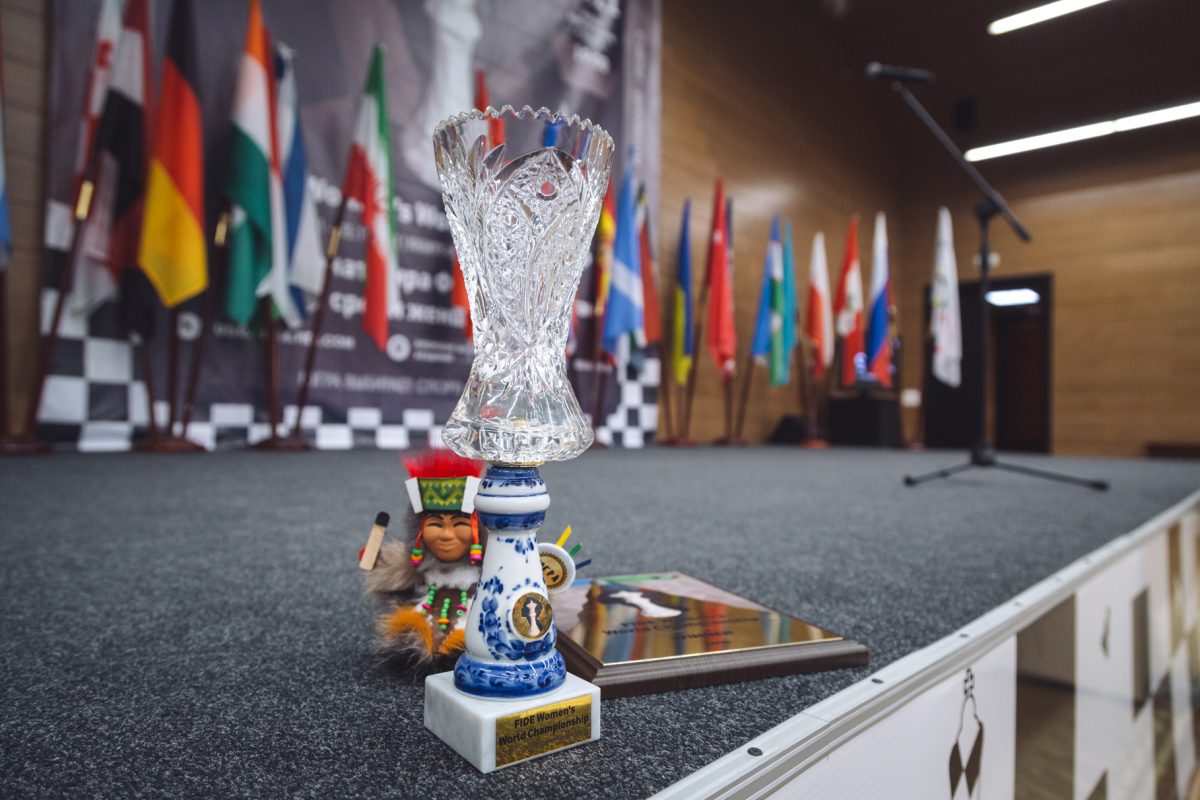
| By boris | 0 Comments

| By boris | 0 Comments

| By boris | 0 Comments

| By press | 0 Comments
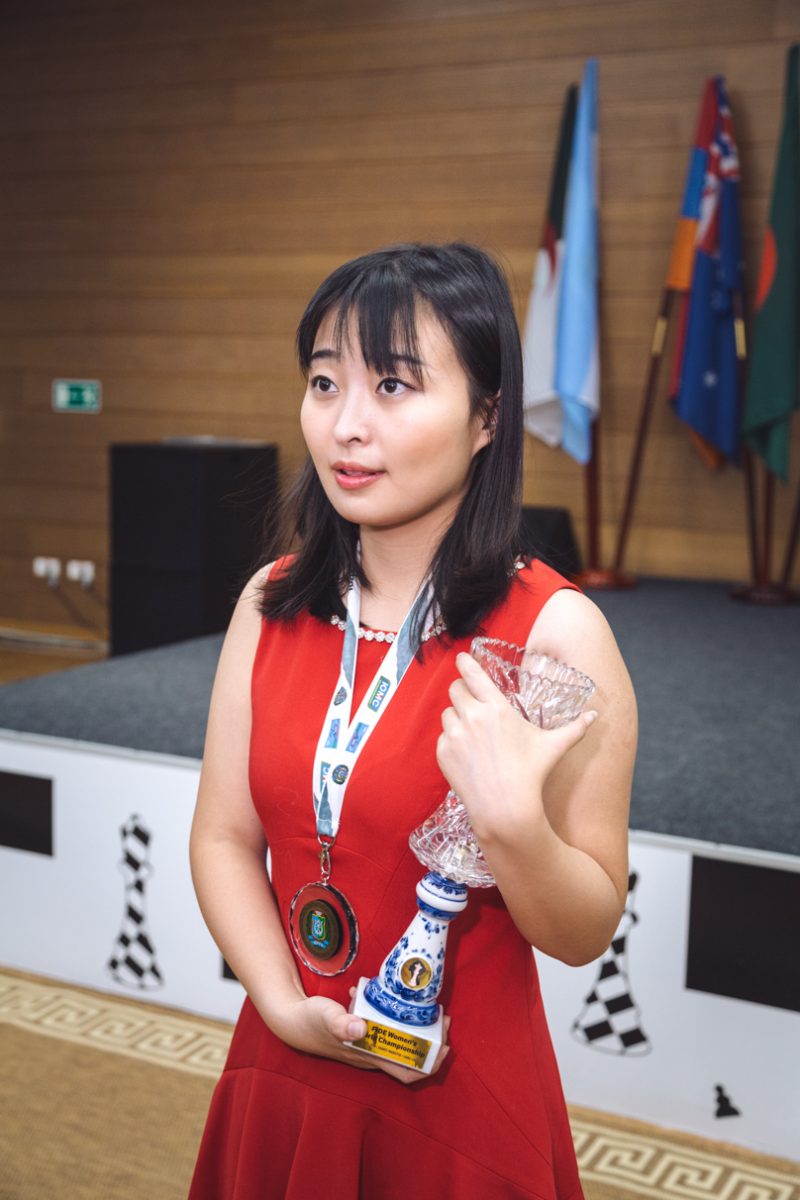
| By Etery | 0 Comments
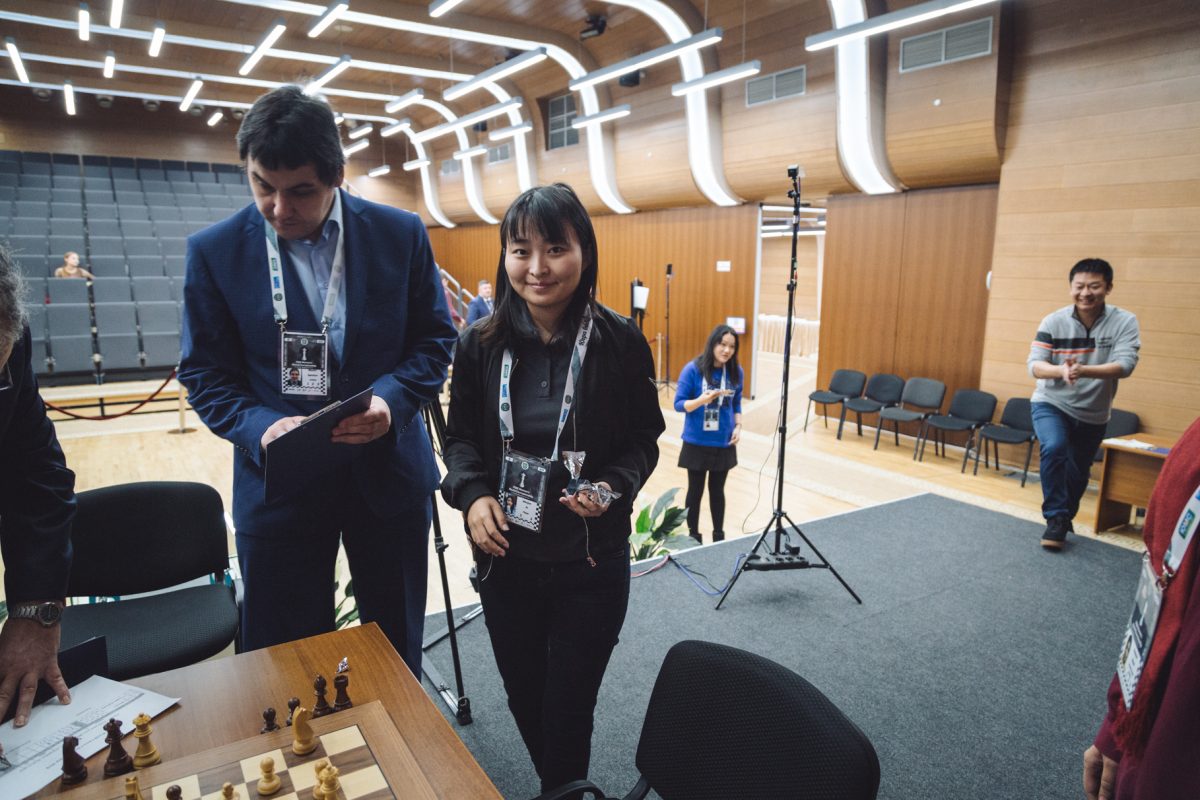
In the second half of the “regular time”, the Champion of the World possessed the initiative. After missing excellent chances with White, she managed to equalize in the fourth game, and the title went on tie-break.
In the third game, Lagno, with Black, entered the King’s Indian variation in which she had defeated Socko at the last year European Rapid Championship. On the move 10, Ju Wenjun employed a rare capture with knight. Lagno’s reaction was far from perfect: she delayed with development of her queenside and lost tempi on taking a pawn (to grab an exchange as well would be too risky). Further procrastination with mobilizing her forces might cost Black dear.
Ju Wenjun – K. Lagno
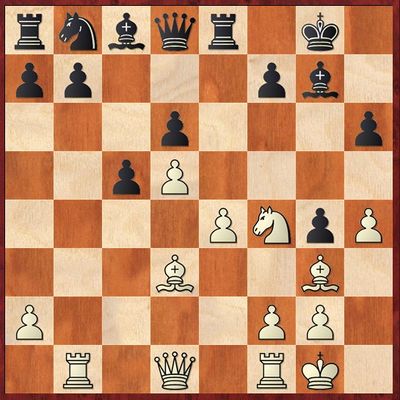
It was time to play 16…Nd7, planning …Ne5. After 16…c4? 17.Bxc4 Rxe4,there already emerges the motif of a combinational blow that could have decided the outcome in a few moves: 18.Qc2 Re5 (18…Bf5 19.Bd3; 18…Re8 19.Nh5) 19.Ne6!
Less energetic 18.Bd3 Re5 19.f3 h5 20.Be2 allowed Black to return to the idea of developing queenside– 20…Nd7, though even here she also faces difficulties.
Instead, Lagno chose 20…Qd7?, clinging to the g4-pawn.
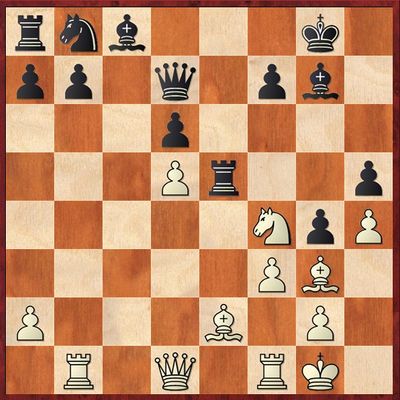
Here Ju carried out an awkward maneuver 21.Rb4 Na6 22.Re4 and promptly frittered away almost all her advantage.
After 21.fxg4 hxg4 22.Ne6!, Black’s position collapses: 22…fxe6 (22…Rxe2 23.Nxg7 Qe7 24.Nh5 with a “free” crushing attack) 23.Bxe5 dxe5 (on 23…Bxe5, there is already a very strong retort 24.Rb4!) 24.Bxg4, and, to parry threats, Black has to give up at least a piece.
Having wormed out of an unpleasant situation, Lagno immediately makes a positional error.
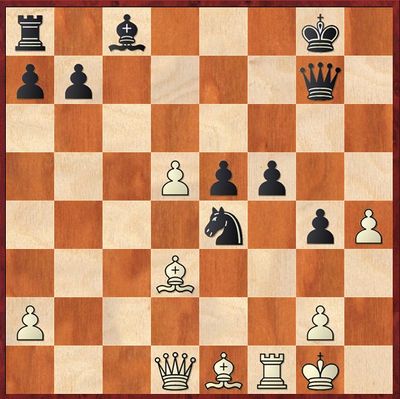
After 28…Nd6 29.Bb4, the knight is unable to remain on the blockade square, but with 29…e4! Black manages to retain a healthy pawn formation and has every right to hope for a desired outcome.
In the game, after 28…Bd7 29.Bxe4 fxe4 30.Bg3 Rf8 31.Re1, the Chinese player had another chance to play for a win in a bishops-of-opposite-color ending with major pieces, disconnected black pawns and obvious difference in the levels of kings’ safety, but was too hasty with exchange of the queens. However, even after that the position remained very sharp. Already after the time-control, mutual inaccuracies led to another “scoring chance.”
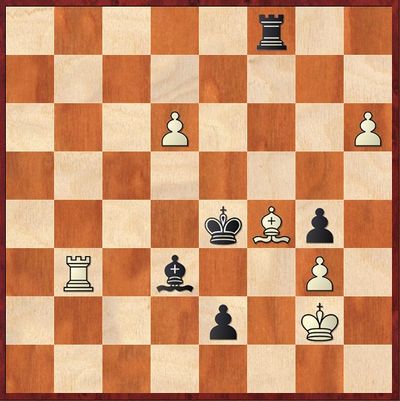
If 48.Kf2? Rxf4+! 49.gxf4 g3+, then black pawns are first to reach the target.
After the text continuation 48.Rb4+ Kd5 49.Kf2, Lagno forced exchange of the rooks: 49…Re8 50.Bd2 (50.Ke1 Ra8) 50…Rf8+ 51.Bf4 Re8 52.Bd2 Rf8+ 53.Rf4 Rxf4+ 54.Bxf4 Ke6. White had to give up her d-pawn for the opponent’s e-one, with an elementary drawn ending on the board.
The indirect defense against queening was 48.Rb7!, and even after 48…e1N+!? 49.Kf2 Nf3 50.Re7+ Kf5, two passed pawns were enough to win, although White would have to demonstrate precise play and avoid dangerous traps.
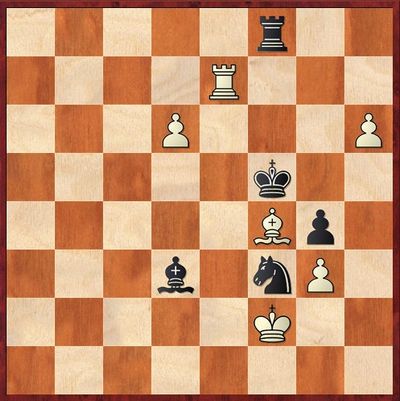
51.h7 (there is a threat of 52.Rf7+) 51…Ra8, and now not 52.d7 Bb5 53.Re8?? Ra2+ 54.Ke3 Re2#, but 52.Bc1! Ra2+ (52…Bb5 53.Bb2) 53.Ke3 Bc4 (threatening with mate on е2 again) 54.Rf7+! Bxf7 55.h8Q.
It must be admitted that here conditions of a search for a decisive continuation are much less comfortable than in the position after move 20.
Despite all her unfortunate slipups, Ju Wenjun managed to tune up for the next game very well.
In the Rossolimo System, Lagno chose a rare scheme. Before that, the position after White’s move 12 had occurred only in the game Boleslavsky-Taimanov played in 1955.
K. Lagno – Ju Wenjun
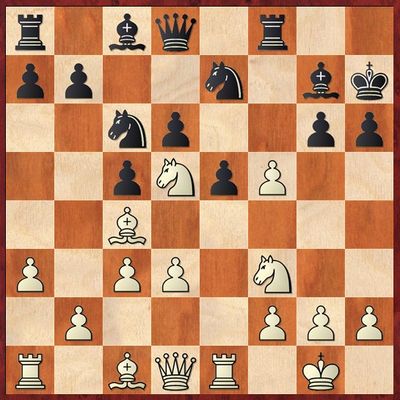
Taimanov took on f5 with bishop and gradually seized the initiative, exploiting opponent’s faltering performance. After making sure that she had a worthy reply 13.Ng5+ to the one-move attack 13.Ng5+, Ju, aiming at a more complex play, opened up the g-file with 12…gxf5. Still, the Russian should have made the same move and then continued 14.Nxe7+ Nxe7 (if 14…Qxe7, then 15.Nh3 and, depending on circumstances, either f2-f4 or Nf4) 15.Nf3 (15.Ne6 Bxe6 16.Bxe6 d5 is unclear). Now White would meet the immediate enemy king’s “homecoming” with check once again, silently offering a draw, and in other lines, her chances in the struggle for the initiative were no worse.
In the continuation chosen by Lagno, her pretty-looking knight is actually rather useless, while Black, under the cover of her strong pawn center, starts to prepare her pieces for the attack against the king.
White’s desire to thwart those plans led to a tactical error, which, however, was left unpunished.
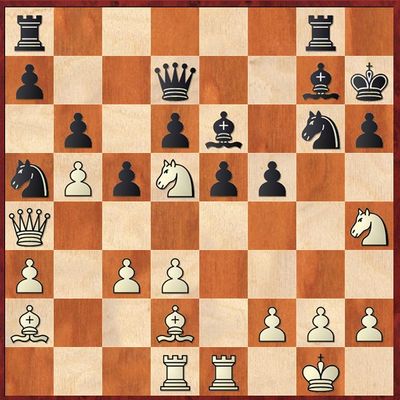
White had just moved 19.Nh4, and the World Champion overlooked the jab 19…c4! that would cut off both knights. After 20.Nxg6 Bxd5 21.dxc4 Be6 22.Nh4 Bf6 23.Nf3 Qb7, White finds herself in the crossfire and loses material.
In the game, Black continued her positional assault with 19…Bh8 20.Nxg6 Rxg6 21.Qh4 Rag8 22.g3 Qf7 23.c4.
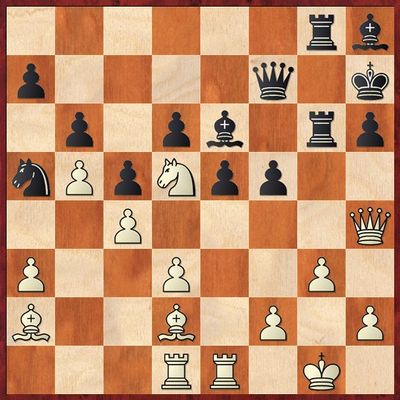
Computer does not approve of the exchange 23…Bf6 offered by the Chinese player. However, for one thing, even variations that definitely “smack with silicone” do not promise any considerable advantage here. From the human point of view, the only exception may be a logical attempt to include the knight into attack, but, after a rough continuation 23…Nb7 24.Bb1 (preparing to meet …f5-f4 with d3-d4) 24…Nd8, Black faces a rather difficult task of further regrouping, as in various lines she would have to reckon with either queen’s or knight’s thrust to е7.
And secondly, after the text move, all black major pieces are gathered on the g-file waiting for a proper moment to deal a decisive blow.
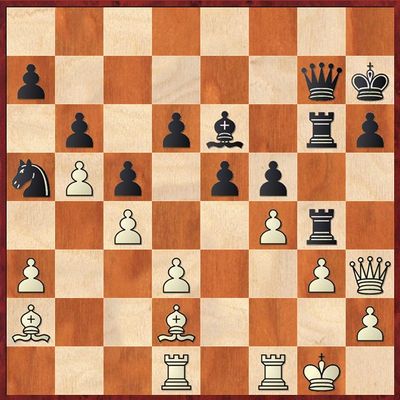
Who, at the sight on the threat …Rxg3+, would be cool-headed enough to leave the key point to its fate and play 28.Qh5!, preventing a possible march of the h-pawn into the bargain? The immediate sacrifice does not win, while attempts at preparing it give White enough time to fortify her position.
In severe time-trouble, Lagno made a self-suggesting move 28.Kh1 and after the reply 28…Bc8!, it turned out that white king cannot hide in the corner. In a few moves, White resigned because of unavoidable mate.
During the tie-break, both 25-minute game were smoothly drawn. In the first 10-minute game, early simplifications led to an equal endgame. Even after Lagno had ceded a pawn for no reason at all, a draw remained the most probable outcome. However, the Russian made a mistake of leaving another pawn defenseless and soon had to give up a piece for the opponent’s passed one. Having taken the lead, Ju Wenjun with White blocked her opponent’s attempts at complicating play confidently. In a quiet level position, Lagno quite unexpectedly blundered away her queen, and the World Champion won the match by two points.
| By press | 0 Comments
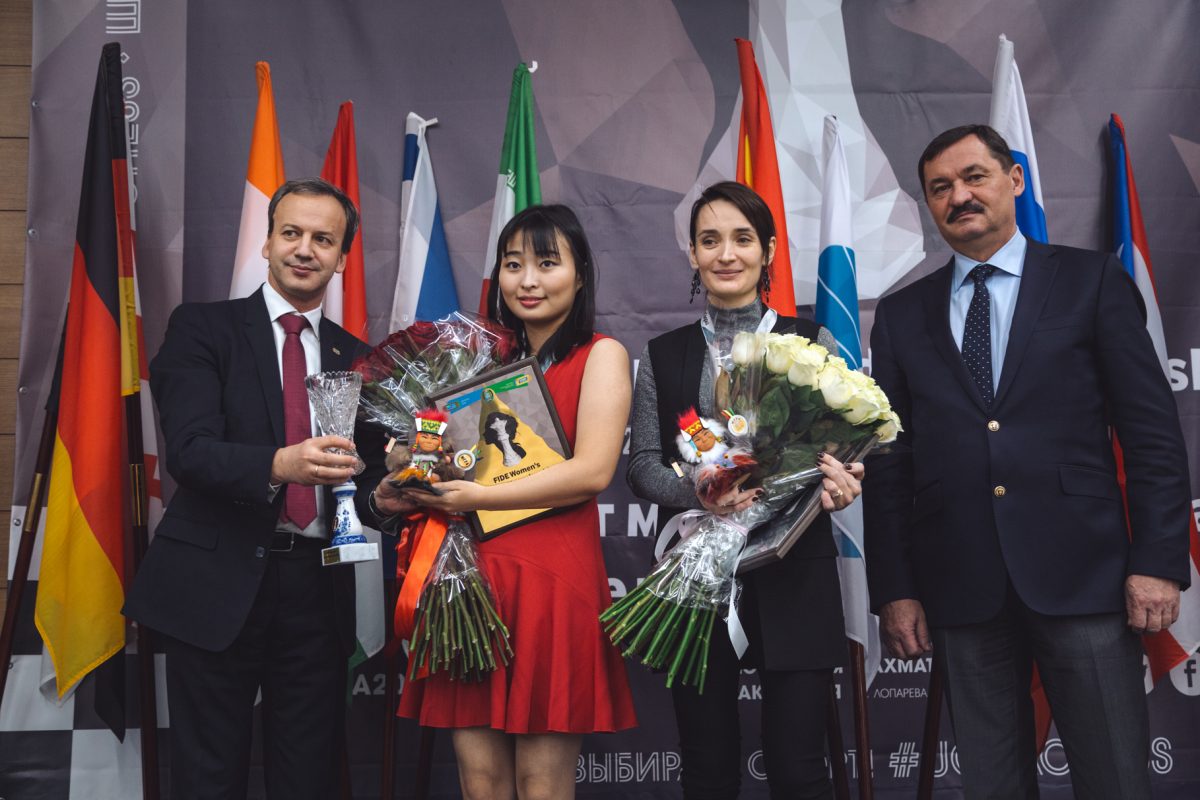
Three weeks after the start of the Women’s World Championship in Khanty-Mansiysk, the world’s strongest woman chess player was determined. The rating favorite of the event, Ju Wenjun from China, defended the title she had won in spring, beating the Russian Kateryna Lagno in the final match.
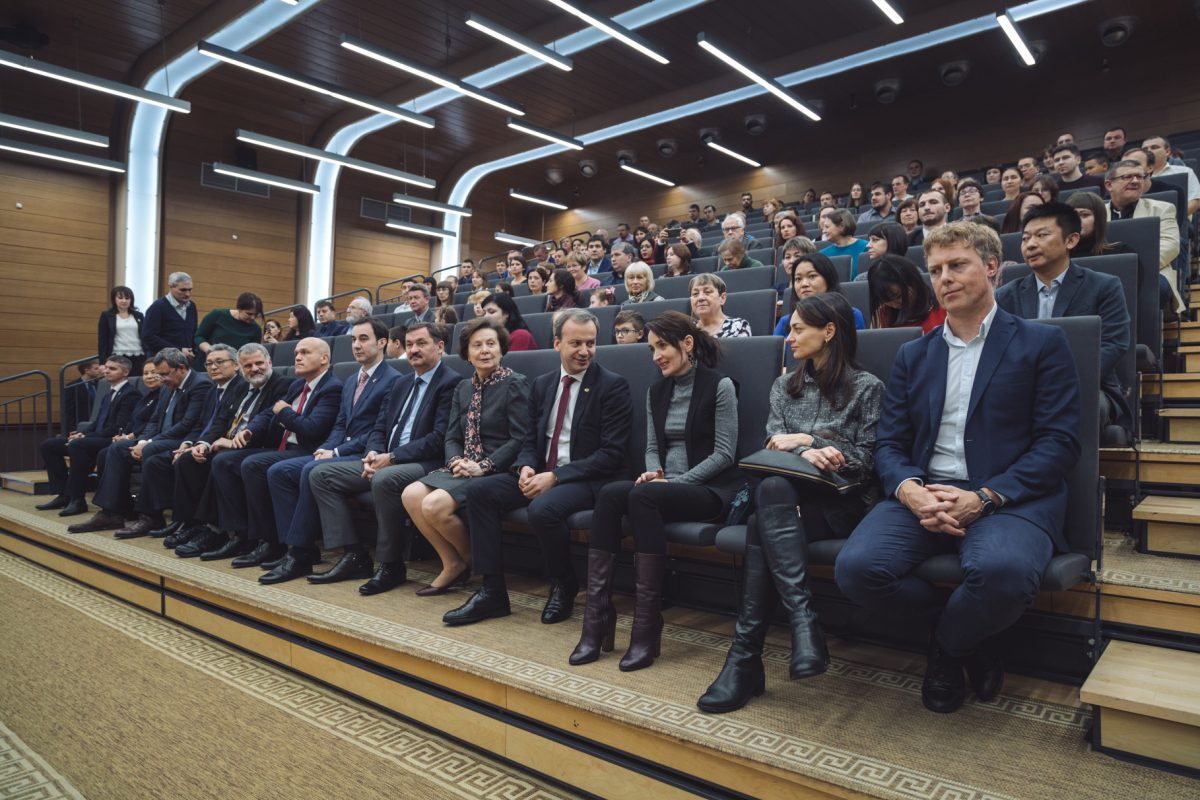
The Closing Ceremony of the championship was attended by Natalia Komarova, Governor of Ugra, Sergey Kosilov, Deputy Minister of Sport of the Russian Federation, Arkady Dvorkovich, FIDE President, and Andrey Filatov, RCF President. However, the main roles were played by the finalists of the championship – Kateryna Lagno and Ju Wenjun.
Sergey Kosilov and Arkady Dvorkovich delivered their speeches to the audience.
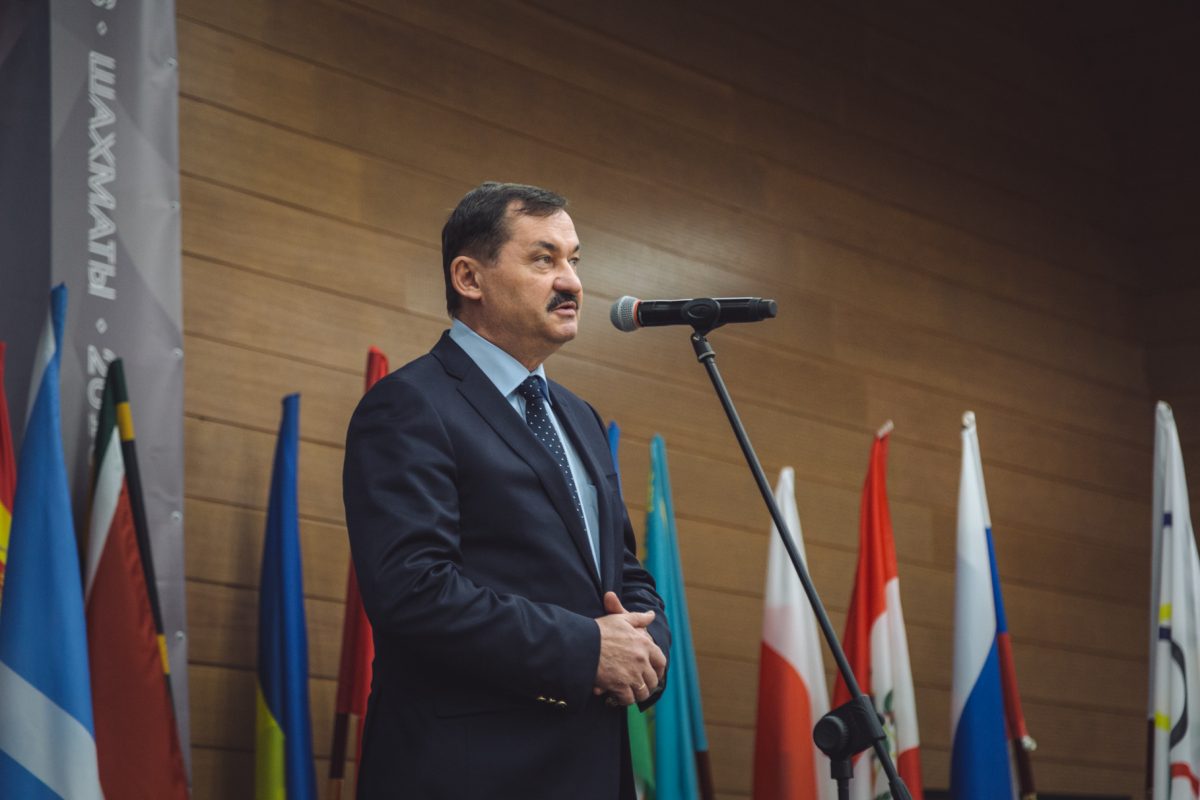
“On behalf of the Ministry of Sports of Russian Federation and personally I would like to greet all these present here including participants, organizers and guests of the championship. My congratulations to the organizers of this tournament, carried out at the very high level. My congratulations to the players on their mastership and level of chess they shown us. I am sure that the spectators have enjoyed watching the world’s top players’ games. I wish everyone great spirits and I wish athletes more high achievements in chess”, addressed Mr. Kosilov.

“On behalf of FIDE, I’d like to congratulate all of you for holding the Women’s World Championship perfectly. This is the first chess championship for me as the FIDE President. I am not sure who was more anxious – myself or the participants of the tournament. But most important thing that we’ve reached the finish and I would like to congratulate all of us on this achievement. Also I’d like to thank every participant. They all have been playing at the level they had been prepared at, and everyone has invested a part of their souls into the play. In addition to being the FIDE President, I am a chess fan. And as a fan of Russia my special congratulations go to Alexandra Kosteniuk and Kateryna Lagno. But as FIDE President I’d like to congratulate Ju Wenjun for defending her title”, said Mr. Dvorkovich.
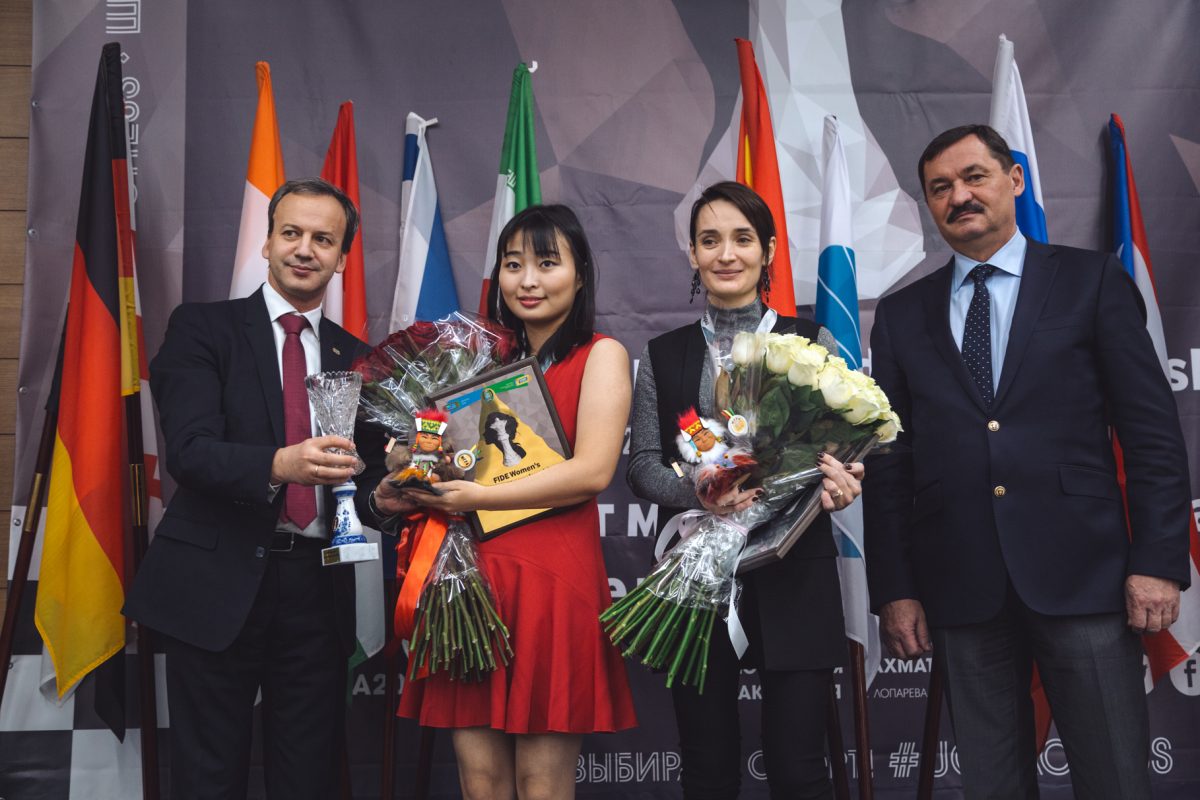
Sergey Kosilov and Arkady Dvorkovich handed over the rewards and flowers to the finalists.
The FIDE Women’s World Chess Championship took place in Khanty-Mansiysk on November 2-23. 64 players from 28 countries were determining the strongest in a knock-out format.
Among the participants there were the defending champion Ju Wenjun (China), and former World Champions Alexandra Kosteniuk (Russia), Mariya Muzychuk (Ukraine), Tan Zhongyi (China), Antoaneta Stefanova (Bulgaria), and Anna Ushenina (Ukraine).
| By boris | 0 Comments
| By press | 0 Comments
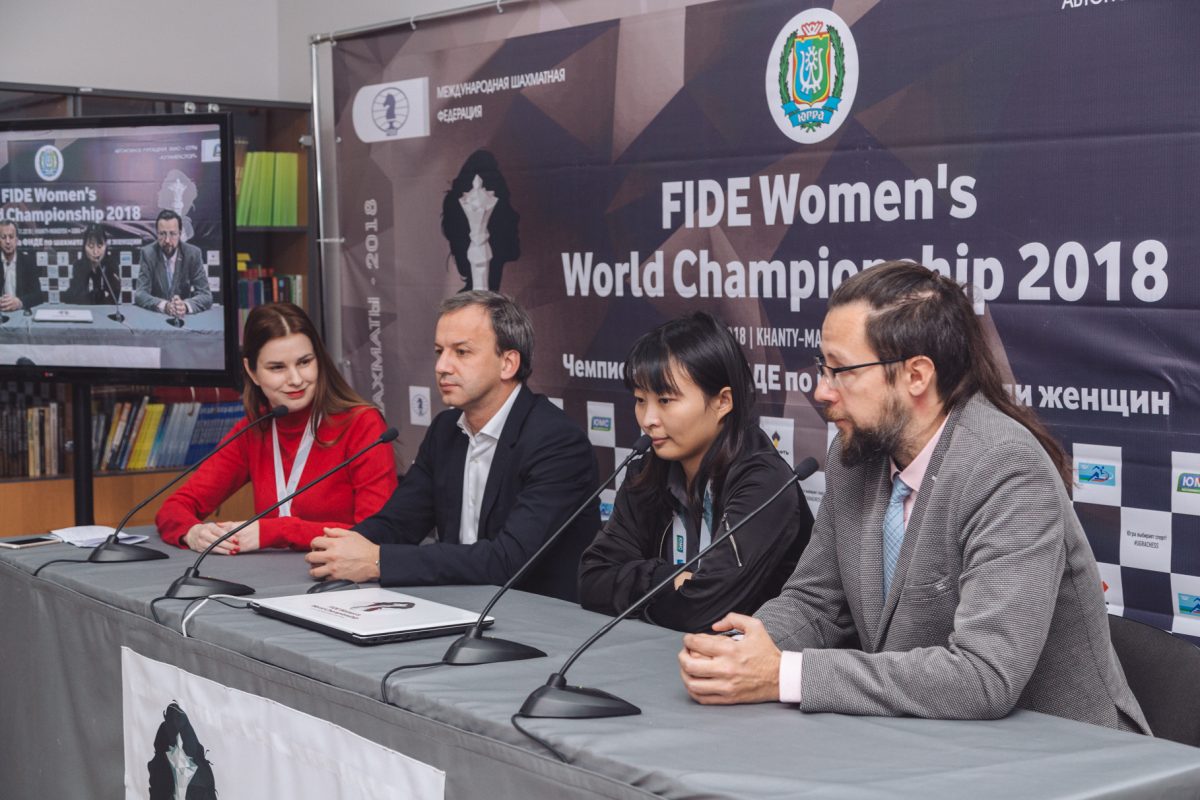
Press conference with the Women’s World Champion Ju Wenjun (China) and FIDE President Arkady Dvorkovich.
– Ju Wenjun, congratulations on defending the champion’s title! Please tell us about this long marathon. Are you happy with your playing here in Khanty-Mansiysk?
– Thank you! Yes, I am. This is my fourth time in Khanty-Mansiysk. I love the city. And as for this marathon, I think I played very well. In the final, Kateryna Lagno played very solidly, she advanced in the second game. I was very lucky to I win the last game and then play tie-breaks.
– Can we say that the final match was the toughest one for you?
– Preparation takes a lot of time and it is very tough for me. But when I am playing I just think about chess. The situation for me was tough but I enjoyed my games, and that is the important thing.
– Mr. Dvorkovich, you watched tie-breaks today. What are your impressions of it?
– We have just witnessed a unique moment in chess history when the world champion defended her title in the knock-out tournament. It’s quite rare event for the chess world. Ju Wenjun was playing amazing games even against one of the toughest opponents like Kateryna Lagno. And I was feeling the pressure that both competitors had on their shoulders and, of course, nerves played some role in this tie-break.
Let me first congratulate all the participants of the Championship. I think all the ladies played very well and we enjoyed the tournament a lot. And of course I’d like to congratulate the three players – semi-finalists – who qualified for the Women’s Candidates Tournament next year. So we are expecting a very tough competition and I am sure that Ju Wenjun will be waiting for the new contender to come out of this Candidates tournament. And, of course, the most important congratulations are for the champion! Ju Wenjun, you’re a great player and a great champion.
– Wenjun, what do you think about the organization of this event?
– I am happy with the organization. Actually, Khanty-Mansiysk is my lucky place. In 2016, I played the Grand Prix series leg here and I became the challenger for the title. Now I have just won the World knock-out championship.
– Two years ago, when you won the FIDE Grand Prix series here, you told us that you were going to spend your prize money just for a dinner with your friends. How are you going to spend your prize now? And how are you going to celebrate your victory?
– Well, I still want to spend this for a dinner with my friends. Also I want to spend some money to keep training. But after this tournament I want to have some rest and just live for a while because it was tedious.
– Mr. Dvorkovich, you have visited some events during this Championship. I would like to ask you about your impressions of the chess life in Ugra.
– Chess life in Ugra is very active and intensive, there are fewer and fewer blank spots with no chess in Ugra. Chess is almost everywhere. Today we visited the Ugra Governor Cup where hundreds of participants play and it’s very impressive. The organization of this event as well as organization of other high level events is very good and of a high quality. That’s why FIDE has been consistently giving the right to host tournaments to Ugra and Khanty-Mansisyk. We will witness a couple of more events in the upcoming years – the World Cup and World Chess Olympiad.
– Ju Wenjun during one of the press-conference told us that she was happy that the format of the Women’s World Championship would change so please tell us some details of this changes.
– Changes have been announced already. We are going to shift to a standard format that prevails in chess where the champion will defend the title against the winner of the Candidates Tournament that will be organized next year. And in the future we will have both the FIDE Grand Prix series and the World Cup played according the knock-out system. A number of players qualified by rating and the best ones of the GP series and the World Cup will play in the Candidates tournament. That means that all the players who have already got their rights to participate in the knock-out tournament will keep their rights. There will be no harm for anyone while there will be clear benefits for high-level players.
| By Etery | 0 Comments
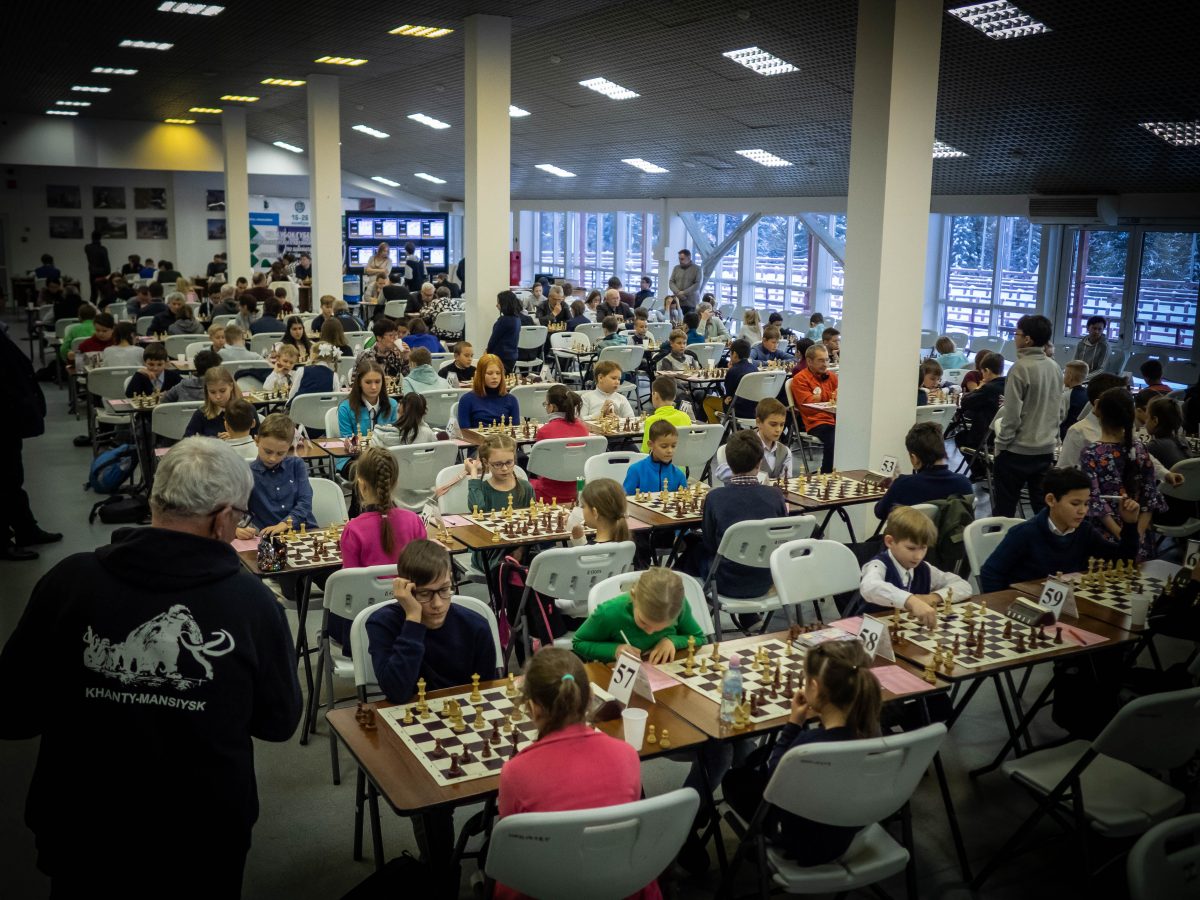
On November 23, Sergey Kosilov, Deputy Minister of Sports of Russian Federation, and Arkady Dvorkovich, FIDE President, paid an official visit to Khanty-Mansiysk. They attended chess events taking place in the city and visited several locations of UgraMegaSport.
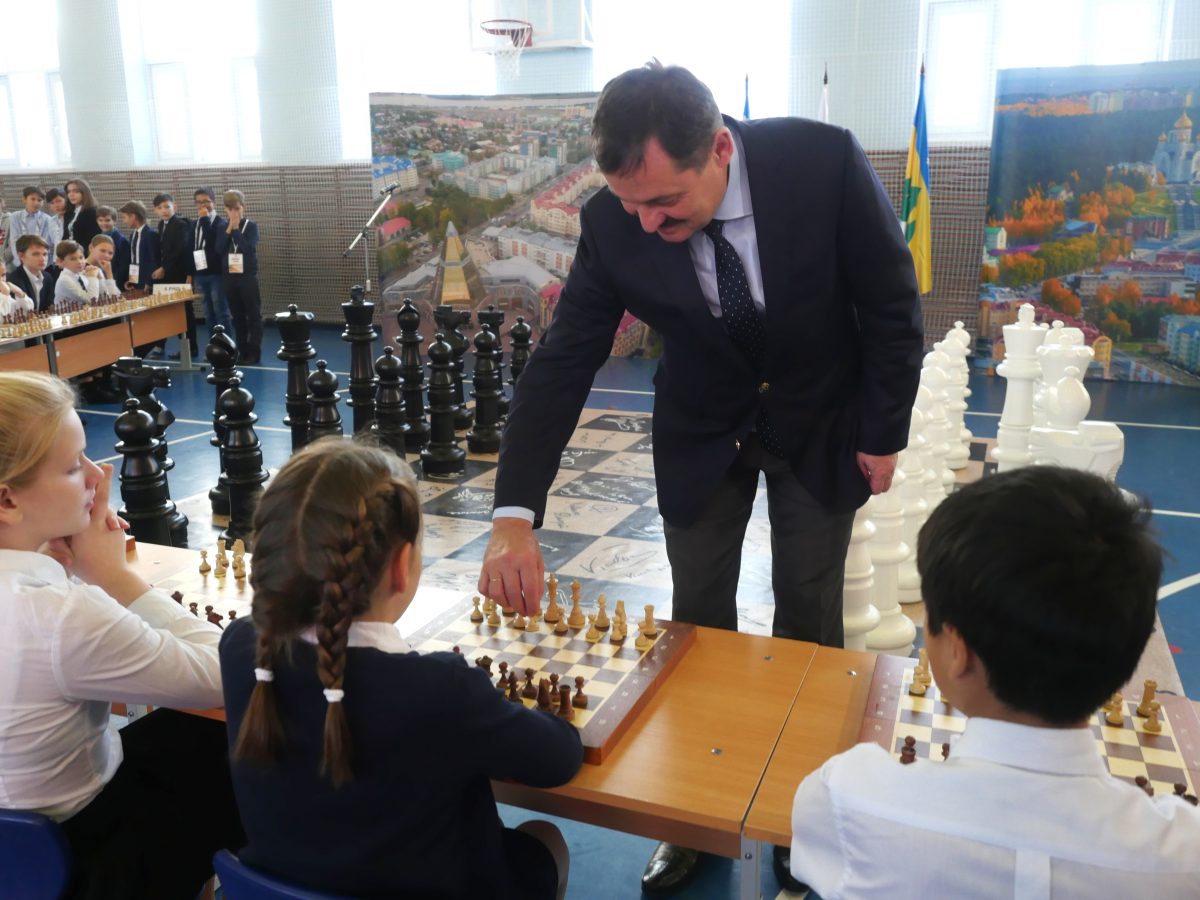
Sergey Kosilov started with a simultaneous display that took place at School #4. 200 pupils from several educational institutions of Khanty-Mansiysk participated in the simul. Ugra Chess Academy was represented by 29 sportsmen – students, trariners, and seniors. The Deputy Minister was accompanied by Maksim Ryashin, Mayor of Khaty-Mansiysk, Yury Lichkun, Director of the Department of Education of Khanty-Mansiysk, and Sergey Atramonov, Director of the Department of Physical Culture and Sport of Ugra.
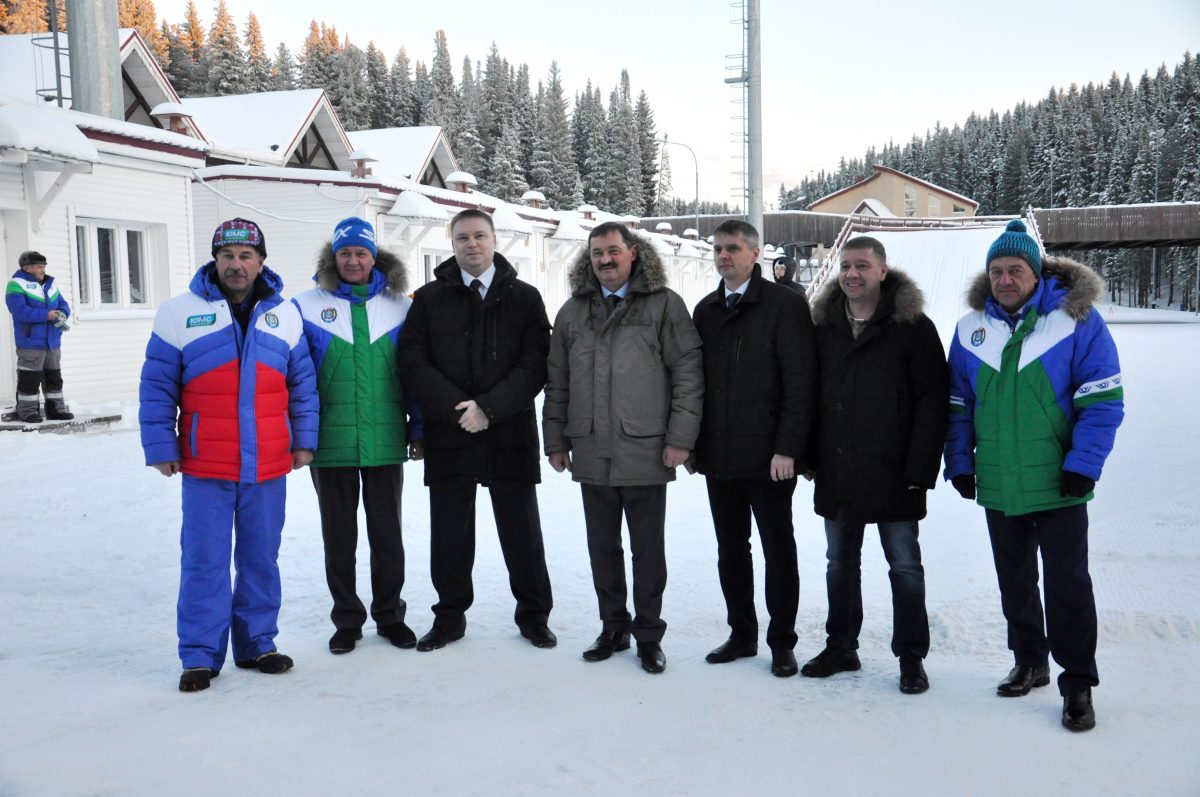
The Winter Sports Center named after A.V.Filipenko was the next stop for Sergey Kosilov and Arkady Dvorkovich. Its VIP stand hosted two chess tournaments – 14th Governor Cup (a stage of the 2018 Russian Cup), and Ugra-2018 All-Russian Open tournament.
Sergey Kosilov had a chance to appreciate the infrastructure of the world-famous biathlon center, which will host the Russian Cup on December 4-10. Oleg Dress, Deputy Director of Sport of UgraMegaSport, showed the guests the training facilities and other assets of the Winter Sport Center. After a short sightseeing trip the Deputy Minister observed chess tournaments for a while.
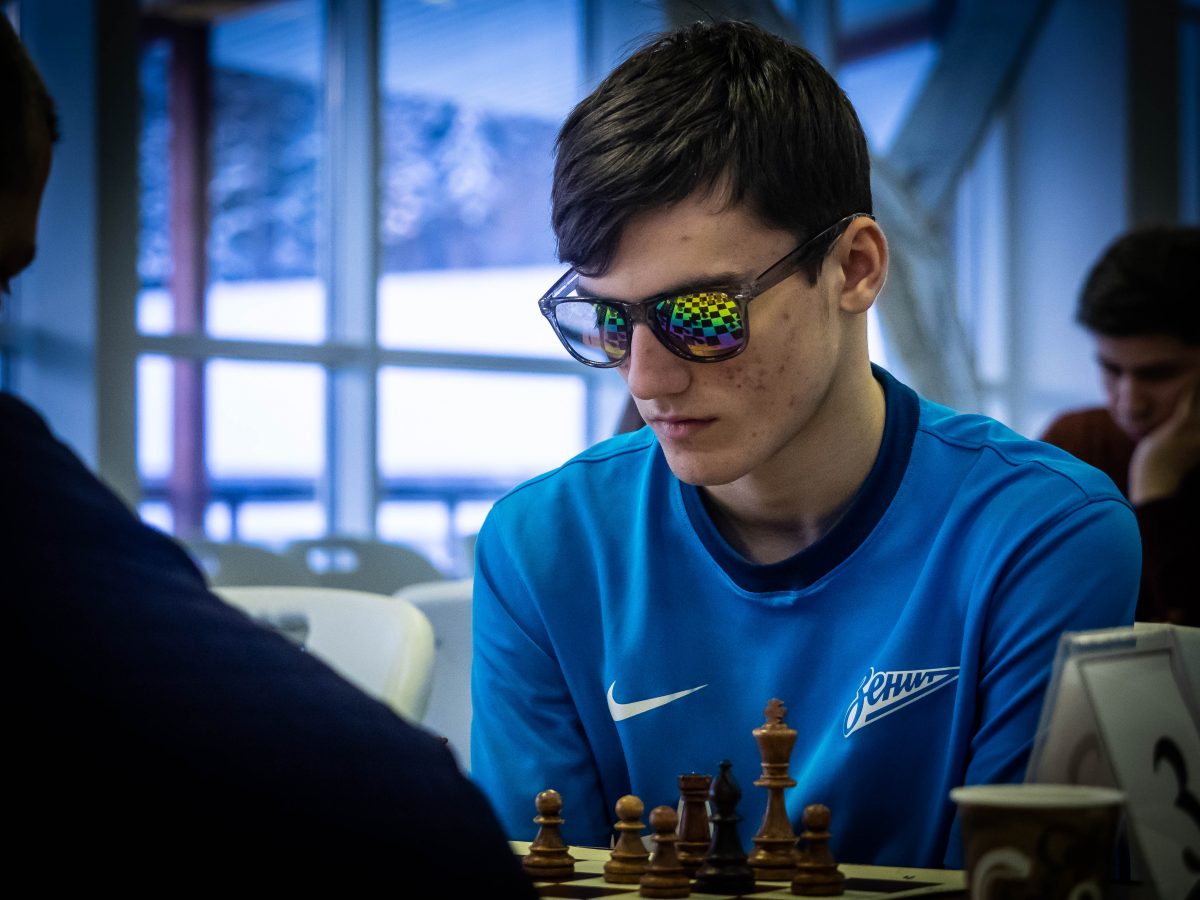
Arkady Dvorkovich together with Valery Radchenko, Director of UgraMegaSport, and Yury Yuzhakov, Deputy Governor of Ugra, examined conditions of chess tournaments that were taking place during the Women’s World Championship.
The delegation observed the tournament that attracted more than 140 players, and then focused on the exhibition stand with children’s drawings on chess topics.
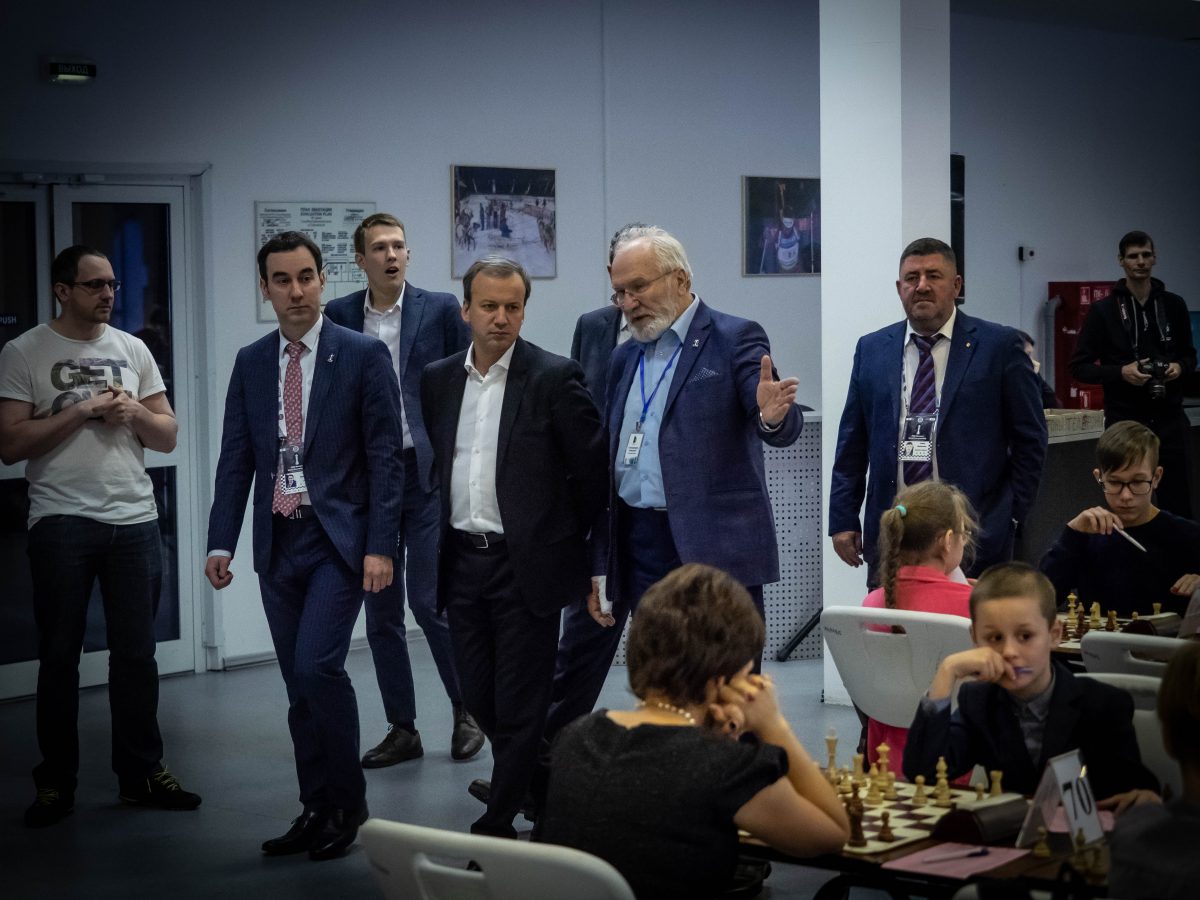
After that the guests went to the Ugra Chess Academy for the Women’s World Championship Final between Ju Wenjun (China) and Kateryna Lagno (Russia).
After the tie-break the VIP guests went to the Museum of Nature and Human, where they participated in establishing a chess club under the project “Removing blank sports from Ugra chess map”. After the ceremony, the delegation members took part in an excursion and learned about the history and traditions of the Ugra land.
| By boris | 0 Comments

| By Etery | 0 Comments

The tie-break of the Women’s World Championship Final between Ju Wenjun (China) and Kateryna Lagno (Russia) took place on November 23.
The game was attended by Sergey Kosilov, Deputy Minister of Sport of the Russian Federation, Arkady Dvorkovich, FIDE President, Andrey Filatov, RCF President, Sergey Artamonov, Director of Physical Culture and Sport Department of Ugra, and other officials.
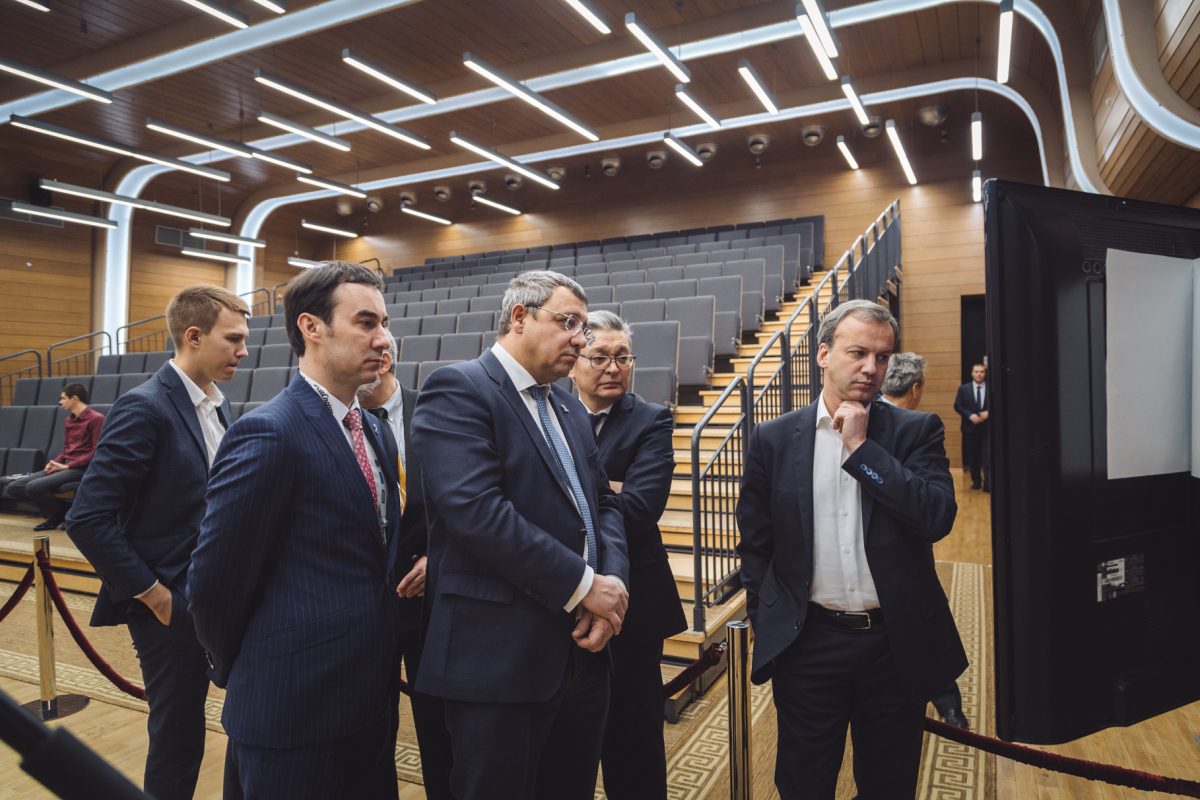
In the first rapid game Ju Wenjun had White. It was a relatively peaceful game in the Queen’s Gambit Accepted. Black managed to equalize, and the game logically ended in a draw.
In the next 25-minute game the players went for the Catalan Opening. Once again they were reluctant to take risks. The game ended peacefully in an endgame with opposite-colored bishops and an extra pawn to White.
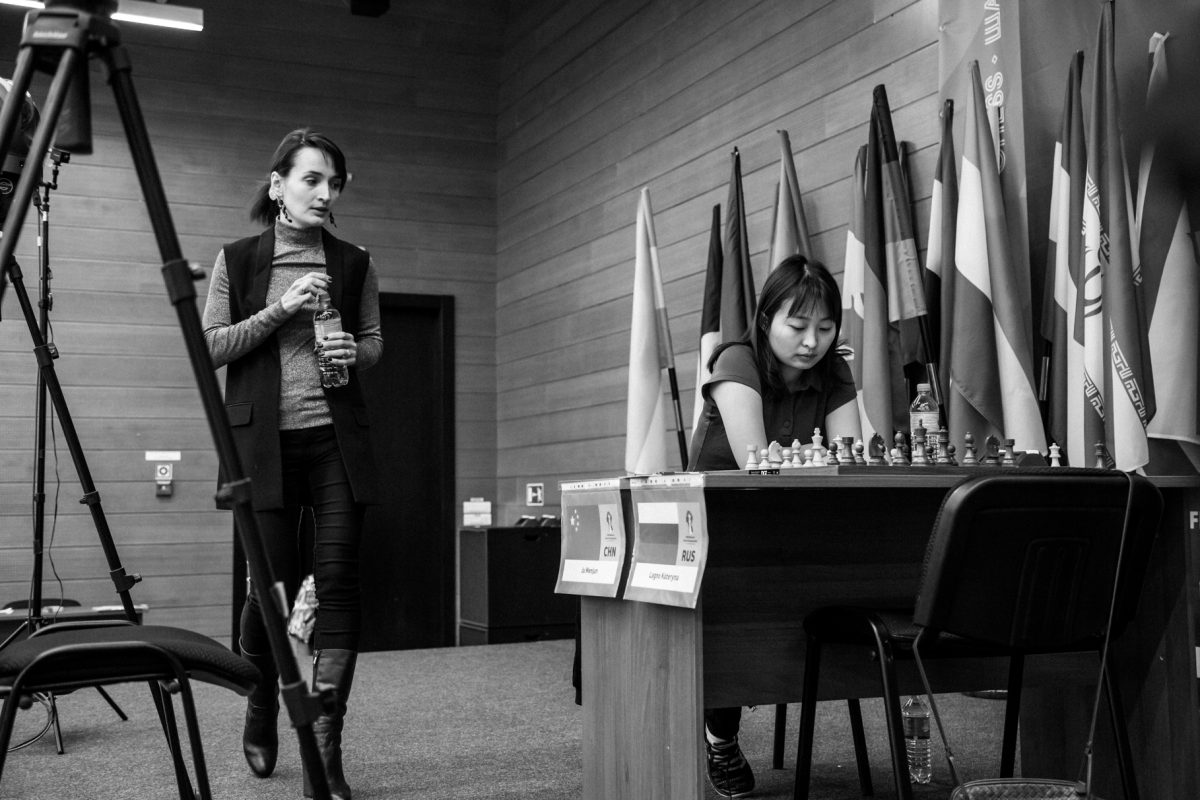
Lagno had White in the first 10-minute game. The position was balanced for a while, but in a minor piece ending Ju Wenjun utilized the opponent’s error, won a pawn and gradually converted her material advantage.
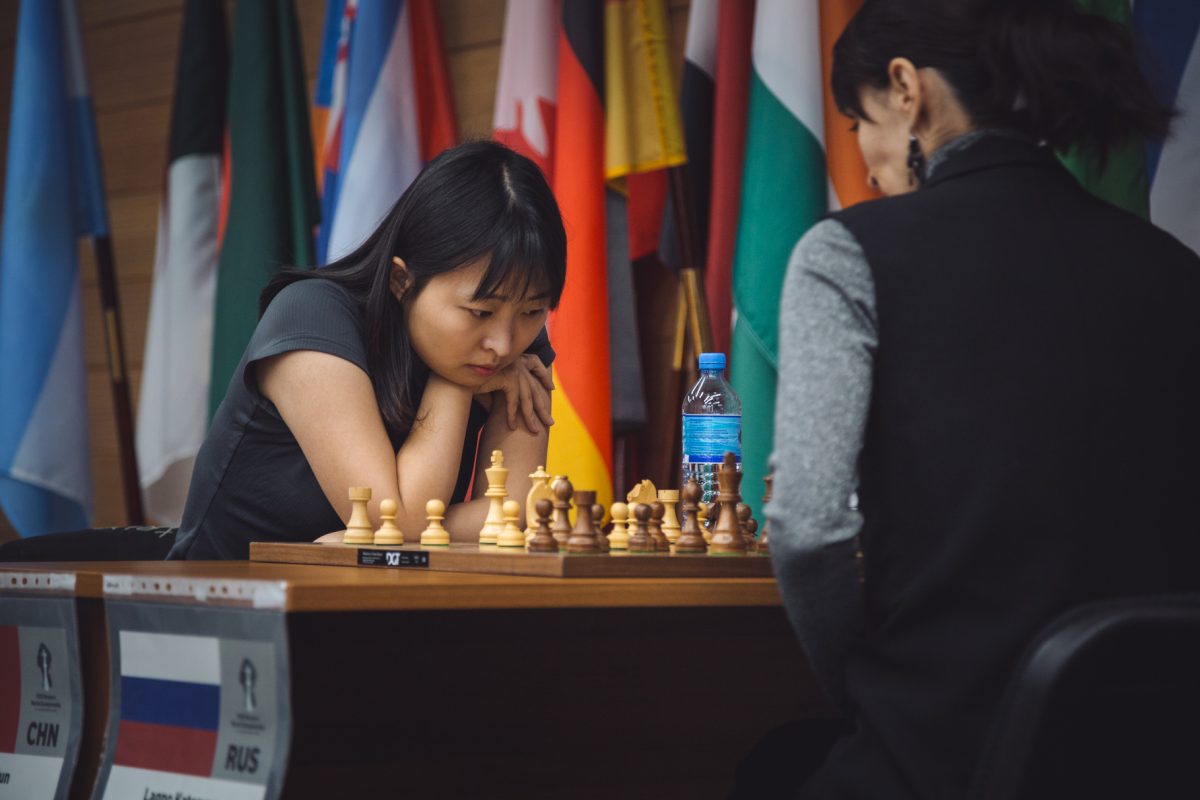
In the second blitz game Lagno tried to create a sharp game, but Ju Wenjun remained fully in control. In an equal position Lagno blundered a queen and lost.
The final score is 5-3 in favor of Ju Wenjun, who successfully defended her title in a knock-out World Championship.
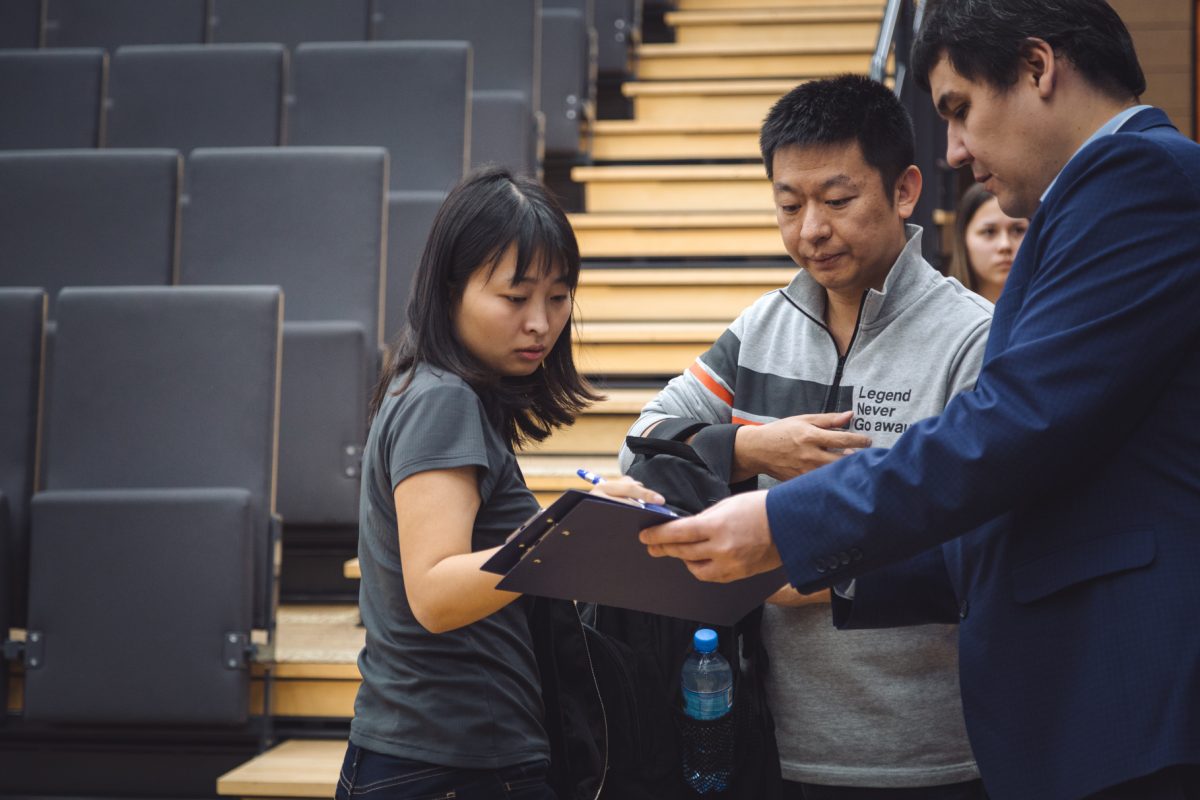
Kateryna Lagno qualified to the 2019 Women’s Candidates Tournament, together with Alexandra Kosteinuk and Mariya Muzychuk.
| By boris | 0 Comments
| By boris | 0 Comments
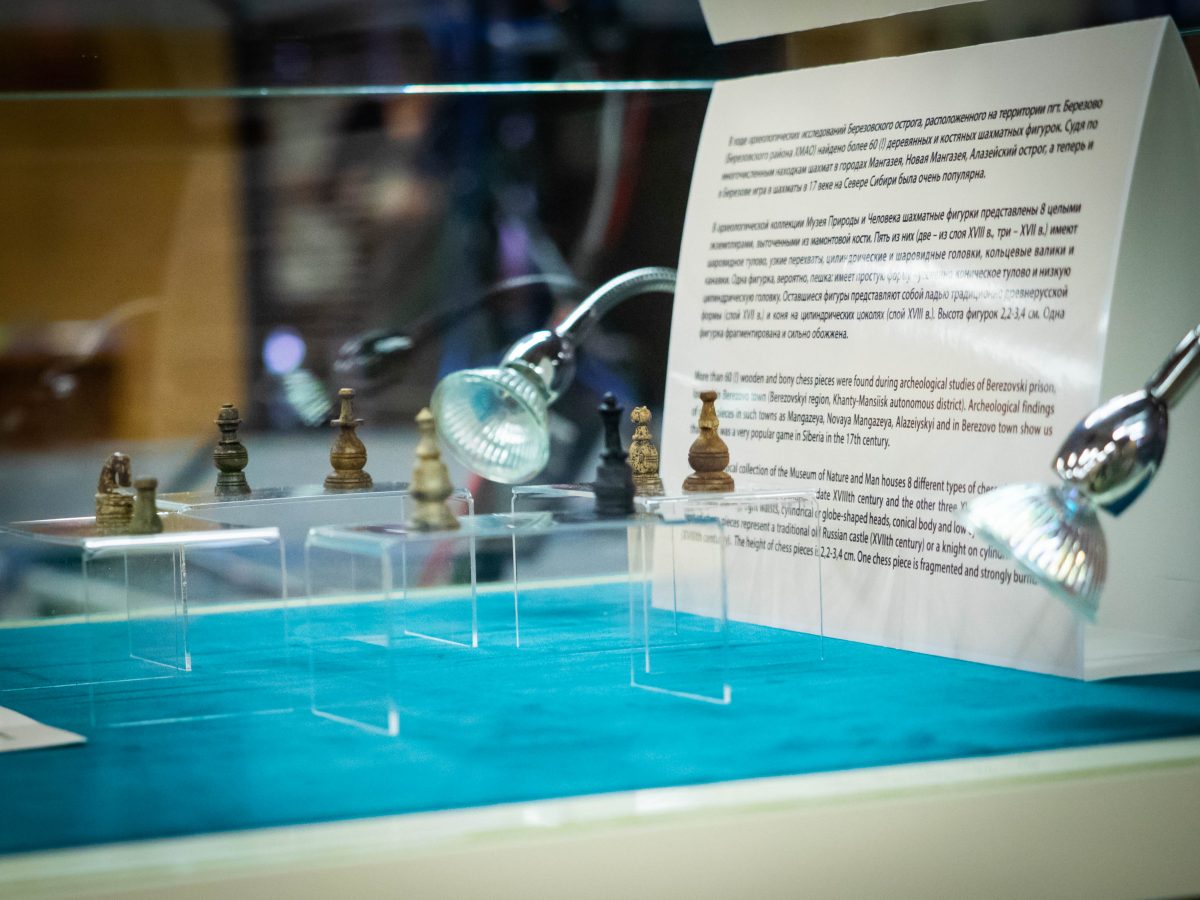
A unique a chess set of 17th-18th century, found during excavations in Berezovo, arrived at the Ugra Chess Academy. The priceless collection from the Museum of Nature and Human is exhibited in the playing hall of the Women’s World Championship.
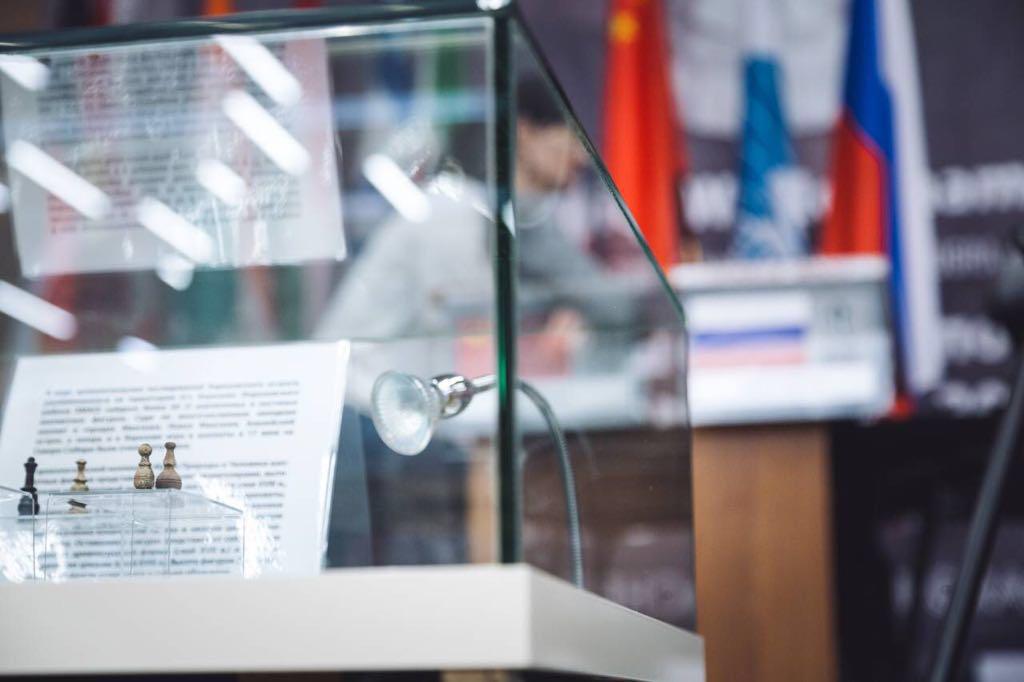
The excavations in Berezovo took place in August 2018 and provided highly valuable historical material. More than 2,500 items of the late 16th-early 17th century were found on the site of the settlement. Among other things there were more than 60 chessmen made of wood and bone, which currently undergo office studies and conservation in Tyumen.
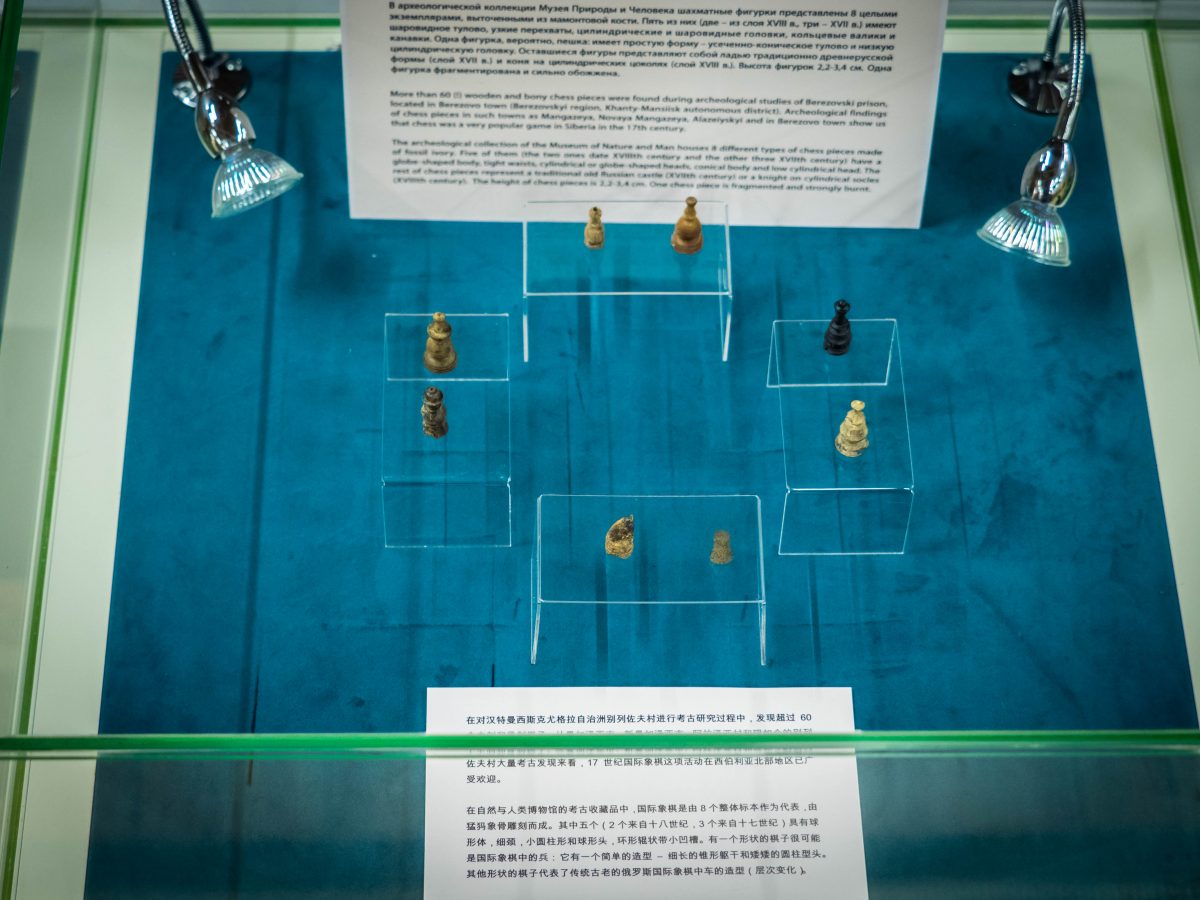
Judging by multiple findings in Mangazeya, Novaya Mangazeya, Alazeysky Stockade, and now in Berezovo, chess was very popular in the 17th century Northern Siberia. According to Elena Gomonyuk, Director of the Museum of Nature and Human, the museum exhibits eight chessmen made of fossil ivory.
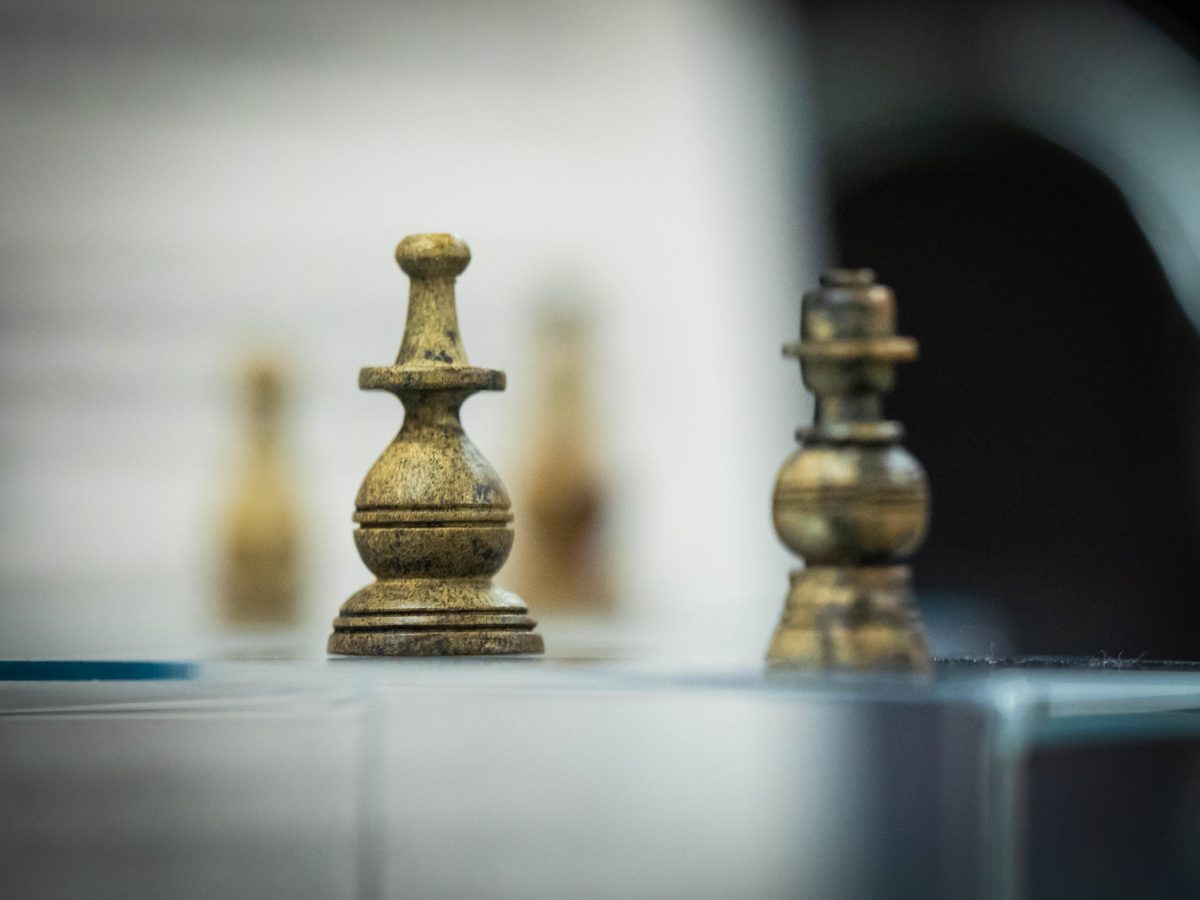
The Women’s World Championship started on November 3 in the Ugra Chess Academy, and today the Chinese Ju Wenjun and the Russian Kateryna Lagno are playing the tie-break, which will determine the World Champion.
| By press | 0 Comments
| By press | 0 Comments

– Wenjun, please tell us what happened in the fourth game of the final match.
– Today I had to play for a win and I tried to do my best. In the opening, she probably blundered some moves and maybe I got lucky to win this game. Still I have tie-break tomorrow.
– Were you happy with the opening in this game?
– It was okay. Actually I didn’t expect much of the opening, I just wanted to play a game.
– How do you estimate your chances tomorrow in rapid and blitz games?
– I don’t know. Clearly she is good at rapid, but I am not bad there as well. But who can tell about tomorrow? No one can predict.
| By Etery | 0 Comments
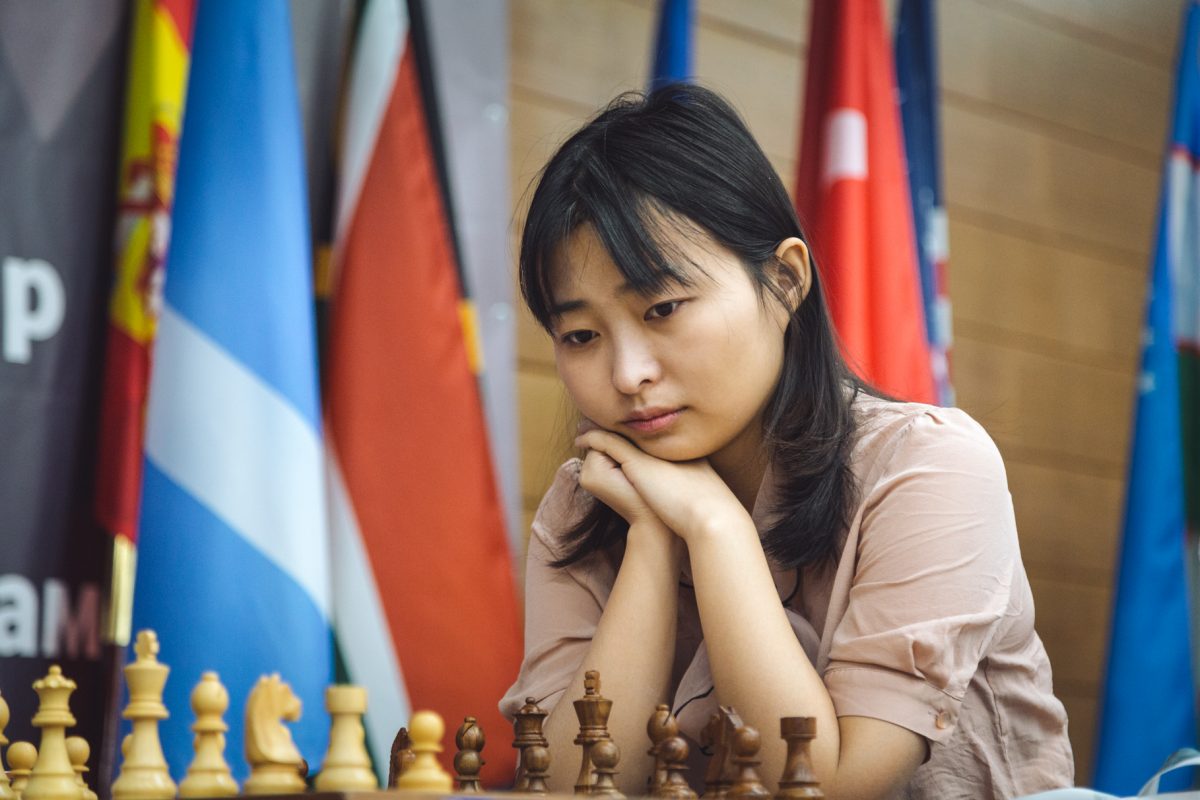
The fourth game of the Women’s World Championship between the defending champion Ju Wenjun (China) and Kateryna Lagno (Russia) was played on November 22 in Khanty-Mansiysk. Lagno had White.
The players went for the Rossolimo Sicilian, where Black managed to create counterplay by carrying out the f7-f5 breakthrough. Concrete play emerged on both sides of the board. In the middlegame Lagno was spending a lot of time, however, by the move 16 Black’s position was already better due to the semi-open g-file and dangerous attacking prospects.
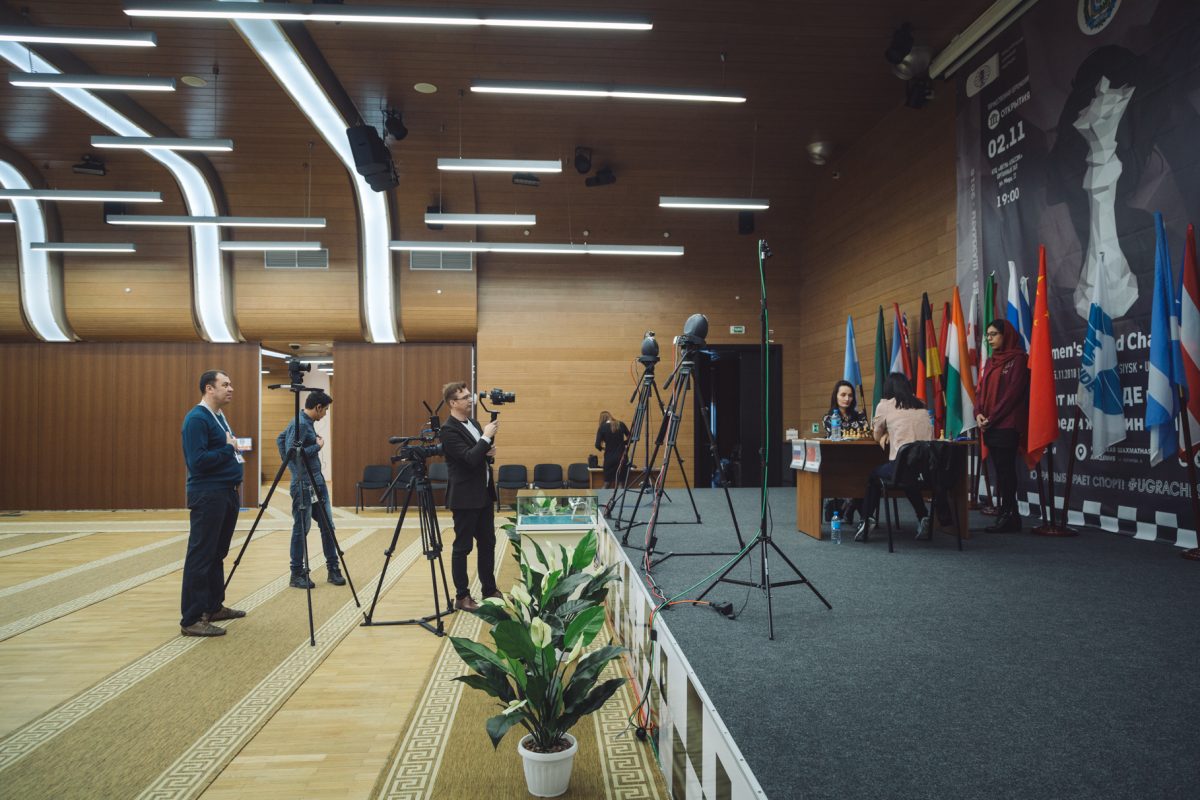
After White’s queenside play was exhausted, Kateryna switched to the other side of the board. However, the raid of her knight could become crucial, had the Chinese found the most principled reply. Ju Wenjun preferred a more solid move.
The computer does not approve Black’s decision to trade the dark-squared bishop for the knight, however, it allowed Ju Wenjun to triple her major pieces on the g-file.
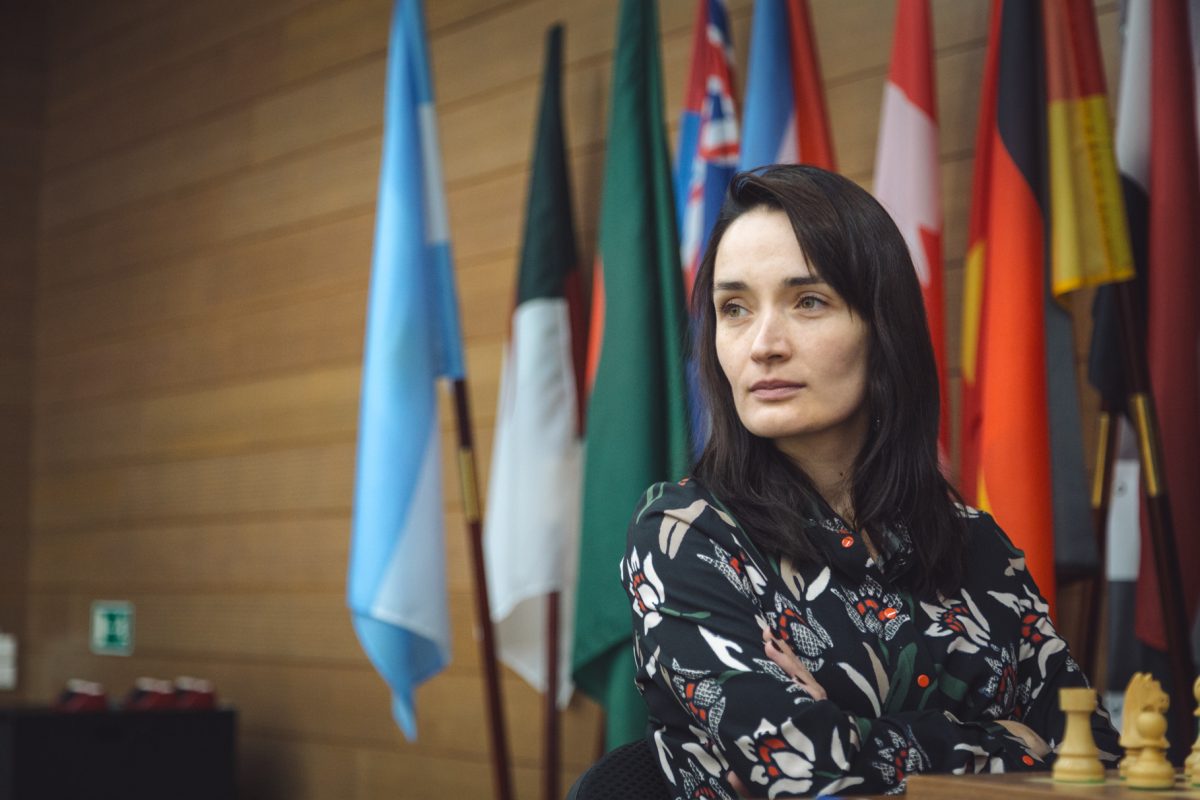
White needed to play with extreme precision to hold the balance, which proved an overwhelming task under the heavy time pressure. One blunder made White’s position hopeless. The game ended in Black’s favor after a swift attack with a rook sacrifice.
The match score is now 2-2. The tie-break will be played on November 23 at 1 pm local time. Ju Wenjun will start with the white pieces.
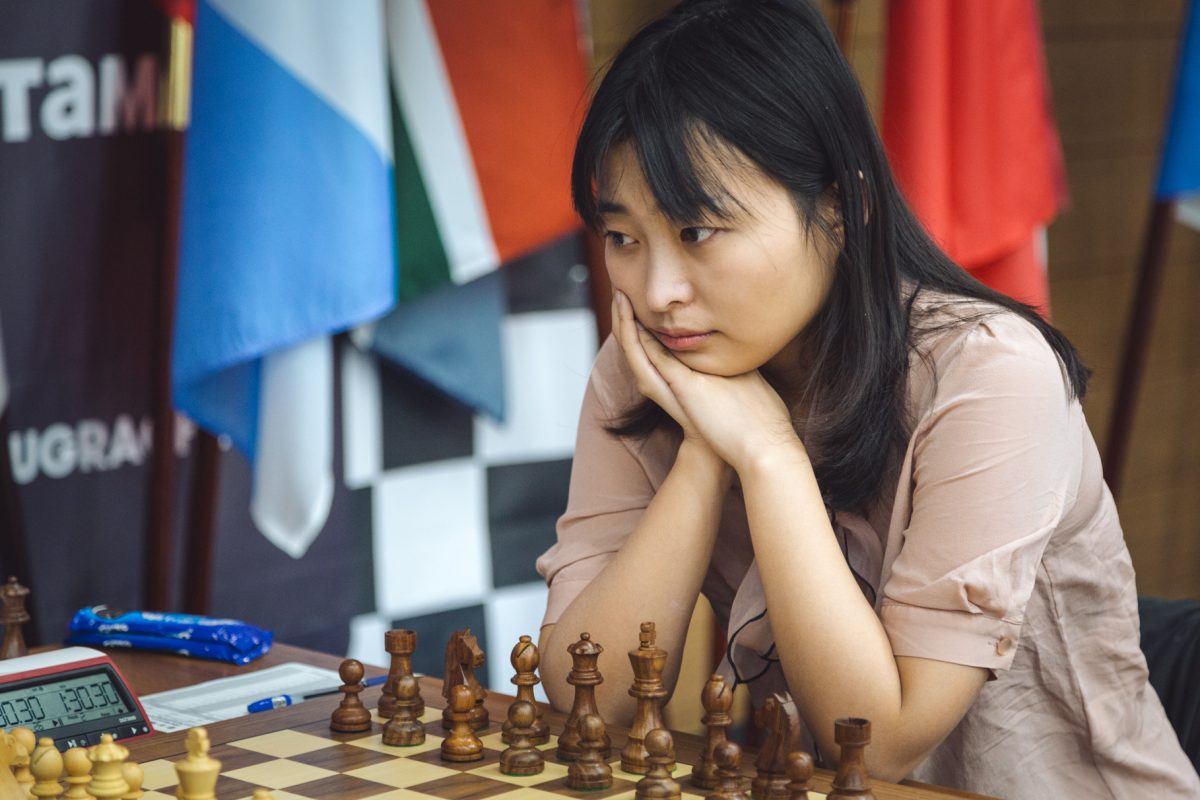
The tie-break will start with two games with rapid time control: 25 minutes plus 10 second per move. If the match is still tied, it will continue with two slow blitz games – 10 minutes plus 10 seconds per move. After that, if the winner is still not determined, two 5+10blitz games will follow. Finally, those matches that are still tied, will proceed to the Armageddon game.
| By press | 0 Comments
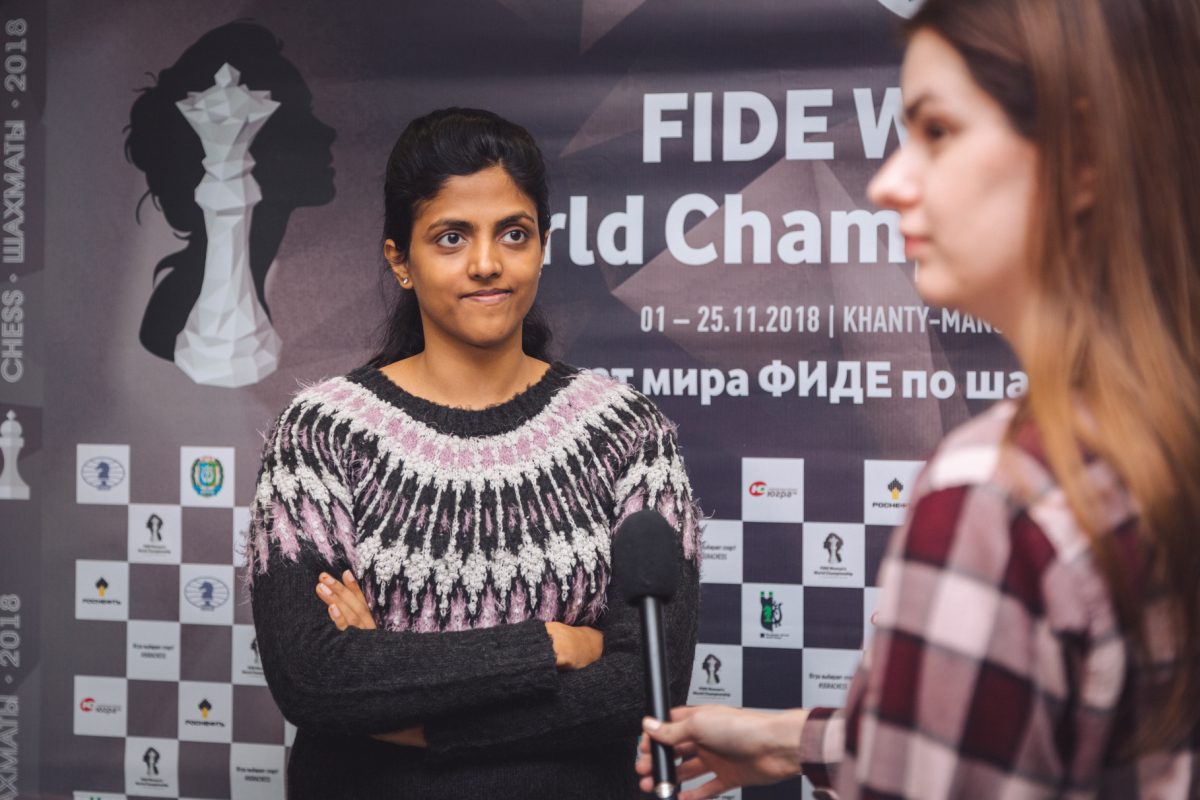
| By boris | 0 Comments
| By boris | 0 Comments

| By Etery | 0 Comments
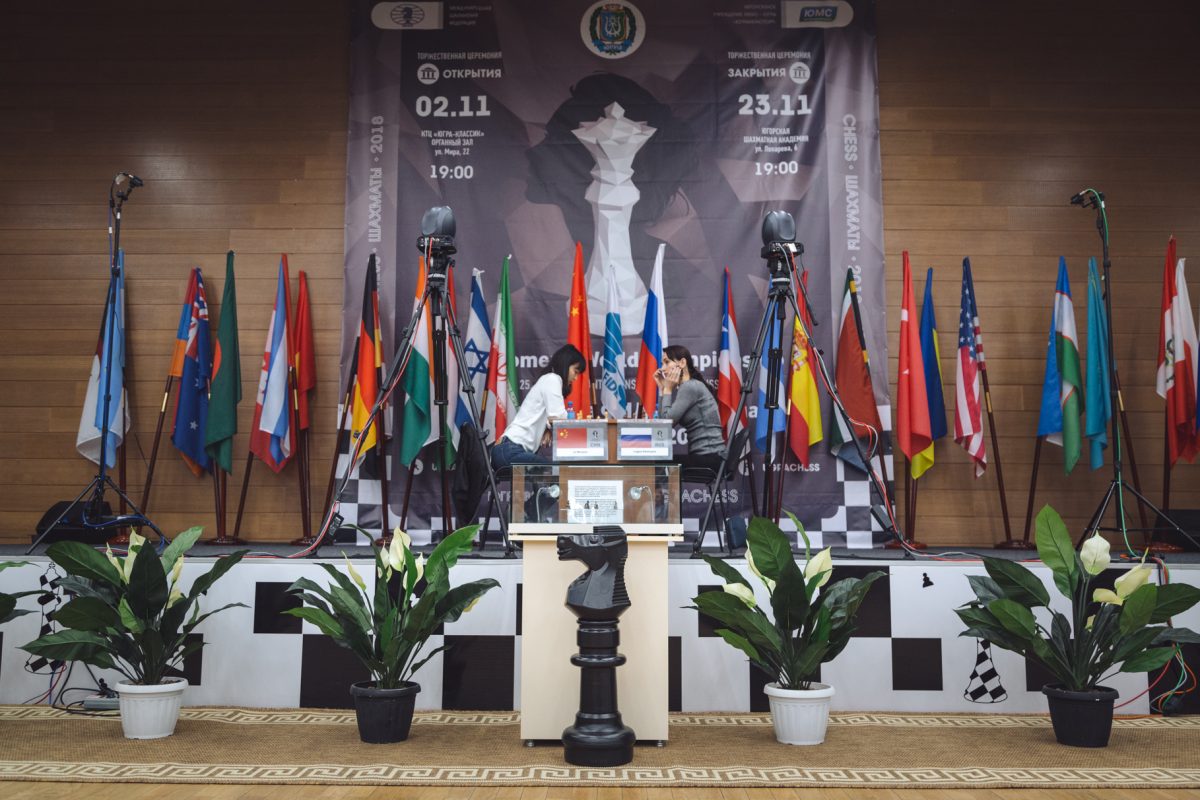
The third game of the final match between Ju Wenjun and Kateryna Lagno was played on November 21. The defending champion had White.
It was a sharp battle in the Benoni Defense. White sacrificed a pawn and was ready to sacrifice an exchange for Black’s dark-squared bishop. In the opening Ju Wenjun acted considerably quicker than her opponent. White got excellent compensation for the pawn and seized the initiative.

On the move 16 Lagno opted for a very sharp pawn push, creating serious complications. Her opponent began to tank, calculating countless variations, and soon the players were even on the clock. Black made a serious mistake at some point, but White missed the most principled reply, opting for a safer approach. The players ended up in a mutual time trouble, which led to an imperfect play from both sides. Black should have avoided trading her central knight, which would give her good chances to equalize. Soon the position with queens, rooks, and opposite-colored bishops emerged.
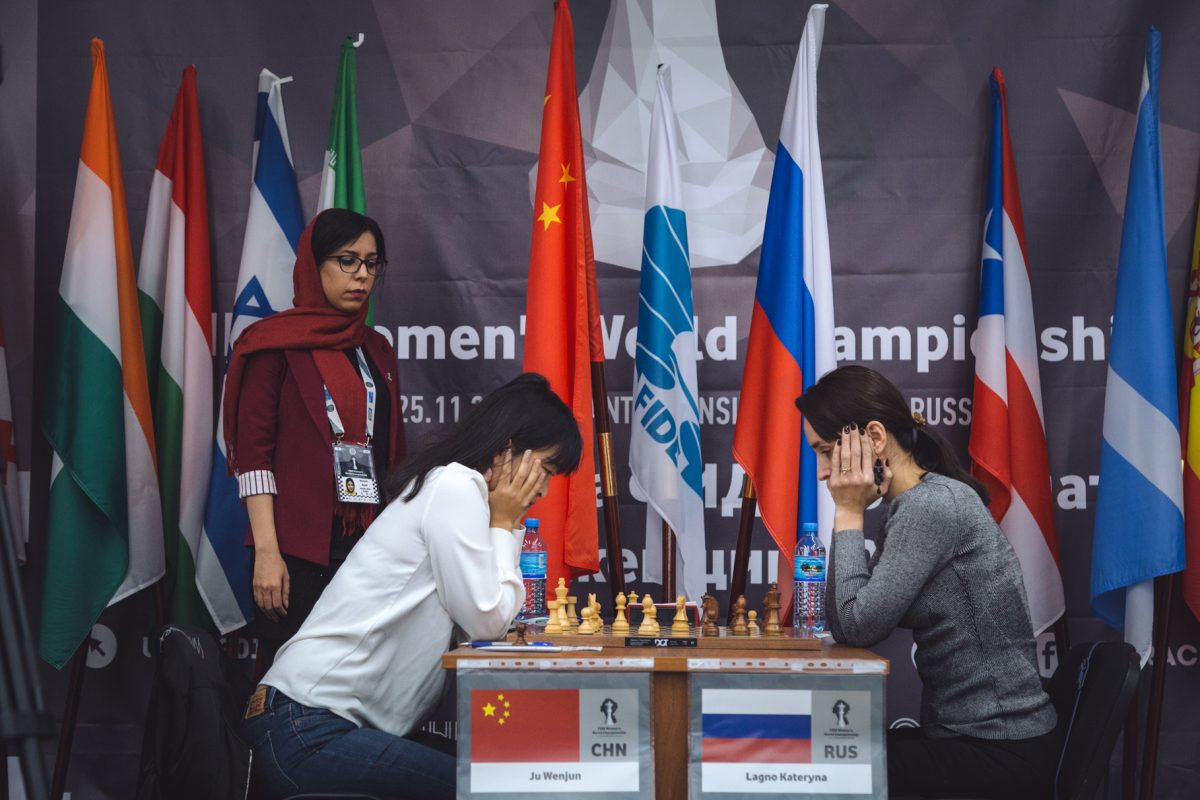
With aggressive play White could create fatal problems for Black, but Ju Wenjun preferred to trade the queens, losing some of her advantage. Still, with perfect play White could have obtained a decisive edge. However, she missed her chances, and Lagno managed to hold a draw.
The match score is 2-1 in Kateryna Lagno’s favor.

The fourth game will be played on Thursday, November 22, Lagno being White.
The final match consists of four games with classical time control. If the match is tied after four games, a tie-break will ensue.
| By press | 0 Comments

An interview with the director of the Department of physical culture and sports of Ugra Sergey Artamonov was held in the press-center of Women’s World Championship.
– Sergey Ivanovich, we are now at the Women’s World Championship, tell us how important it is for this region to host this kind of tournament?
– It is out of doubt that organizing high-level chess tournaments for us is not important only by itself. This is only one of the means of bringing the inhabitants of our region into this game. Chess is now an important part of life for Ugra people and it has really become a mass sport. The statistics backs this. Nowadays there are many people studying chess in special groups and all school children of the region are doing chess in schools. I’ll tell you a fact highlighting the degree of the development of chess in the region: Russian national teams that were recently playing at the Chess Olympiad in Batumi – both men’s and women’s – had players from Ugra – Dmitry Jakovenko and Olga Girya.
A very strong team of organizers which is able to carry out events of any kind of significance in shortest terms was formed. We are trying to be up to time with carrying out chess tournaments as well.
– You have mentioned Chess Olympiad in Batumi and as we all know Khanty-Mansiysk will host another Chess Olympiad in 2020. Please let us know how the city and the region are getting ready for this event?
– Yes, the 44th Chess Olympiad will take place in Khanty-Mansiysk in August 2020. Basing on the previous experience, we can say that representatives of more than 180 countries will arrive here. The key year in preparation for the Chess Olympiad will be 2019 and also we will host the World Cup that year. However, we are already working on infrastructure projects that will both help us to organize the Chess Olympiad and later will be used by Ugra people to do sports.
– Are we talking about the playing venue or hotels as well?
– It is actually both.
– Khanty-Mansiysk had already organized nearly every kind of chess events with the only exception of World Championship title match. Are you planning in the foreseen future to bid for this event too?
– That’s true, in the last 20 years Khanty-Mansiysk has organized almost all kinds of chess events and having a Chess Olympiad for us is really a big deal. I am quite confident that Khanty-Mansiysk deserves to host the highest level chess competitions and if we set this goal and get this opportunity we will organize this for the highest possible level.
– In one of your interviews you said that chess and biathlon are two key sports in Ugra. Why is that?
– Let us start that this two sports are the most popular ones in Ugra. Both by a number of people doing these sports and by a number of competitions organized on the territory of the autonomous region. More than that, biathlon competitions are usually visited by big number of spectators, while chess is a sport that is watched by viewers all over the world by means of Internet broadcasting. Biathlon World Cup legs in Khanty-Mansiysk were attended by several thousands of spectators and, talking about Women’s World Championship, by this day more than 500 000 views from all over the world have watched our broadcasts. In eyes of people from other countries Ugra is strongly associated with both biathlon and chess. We have ideal conditions for these sports.
– It is difficult to argue with that. Thank you!
Recent Comments